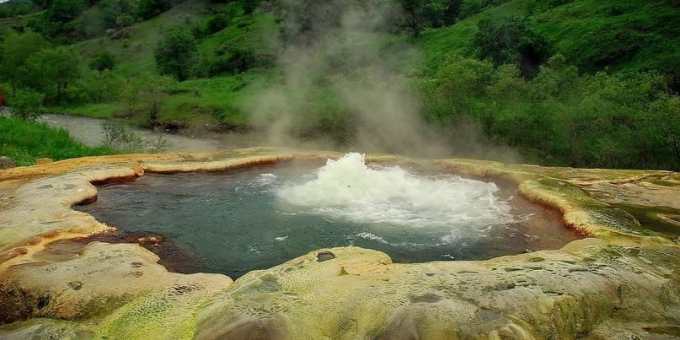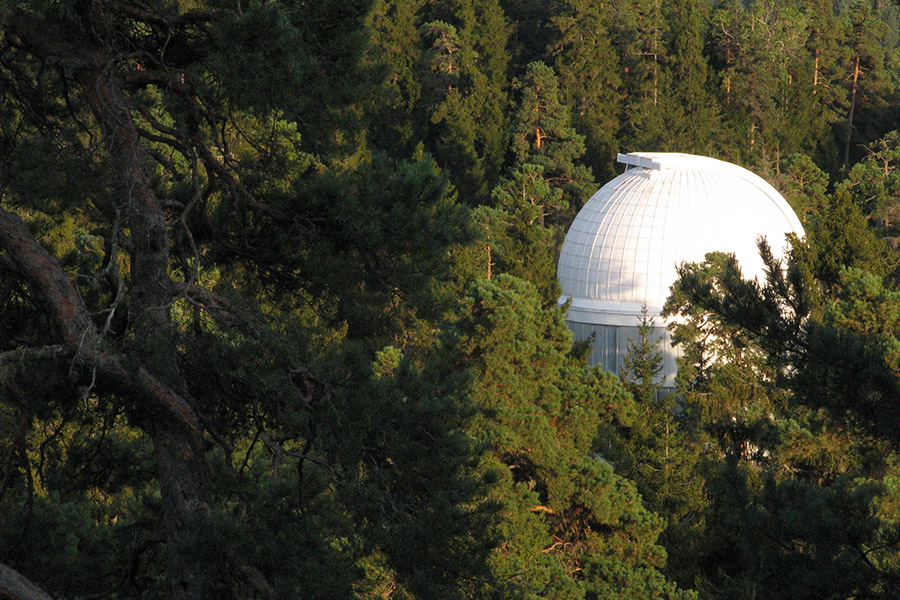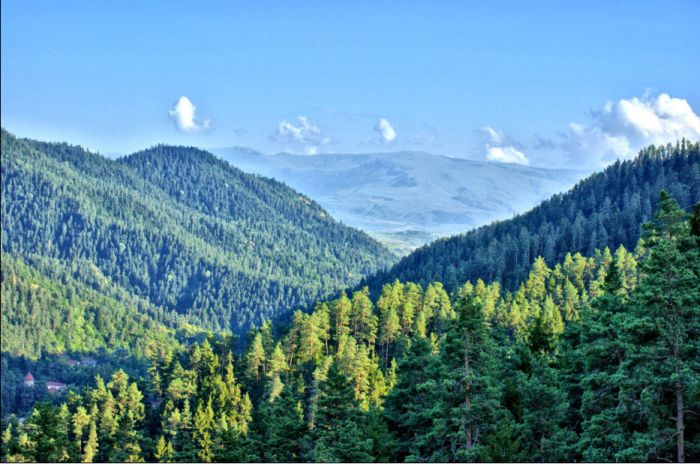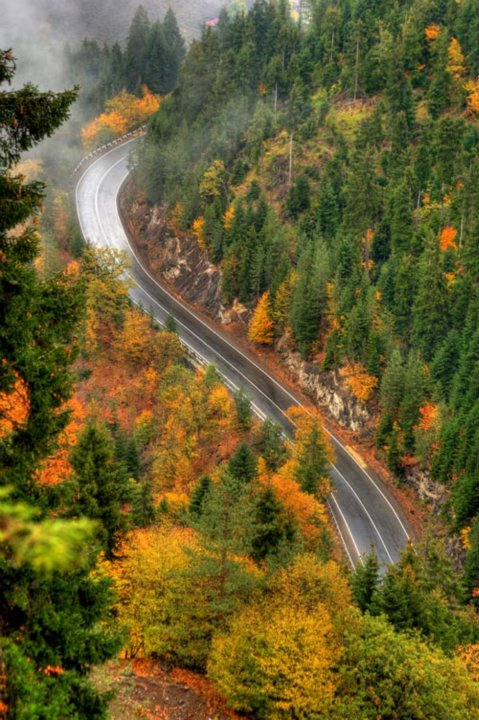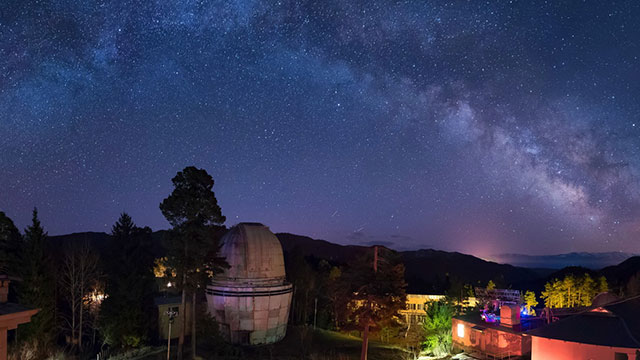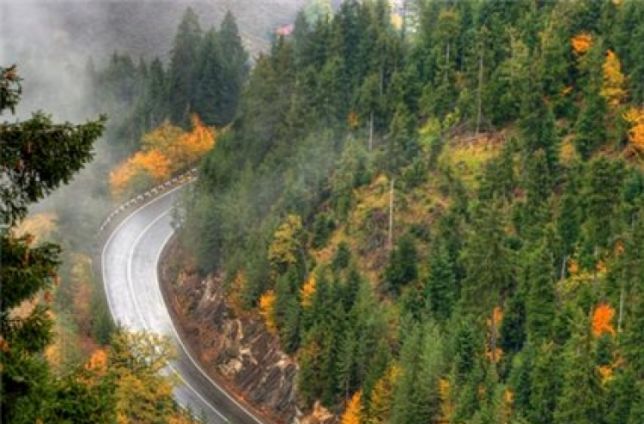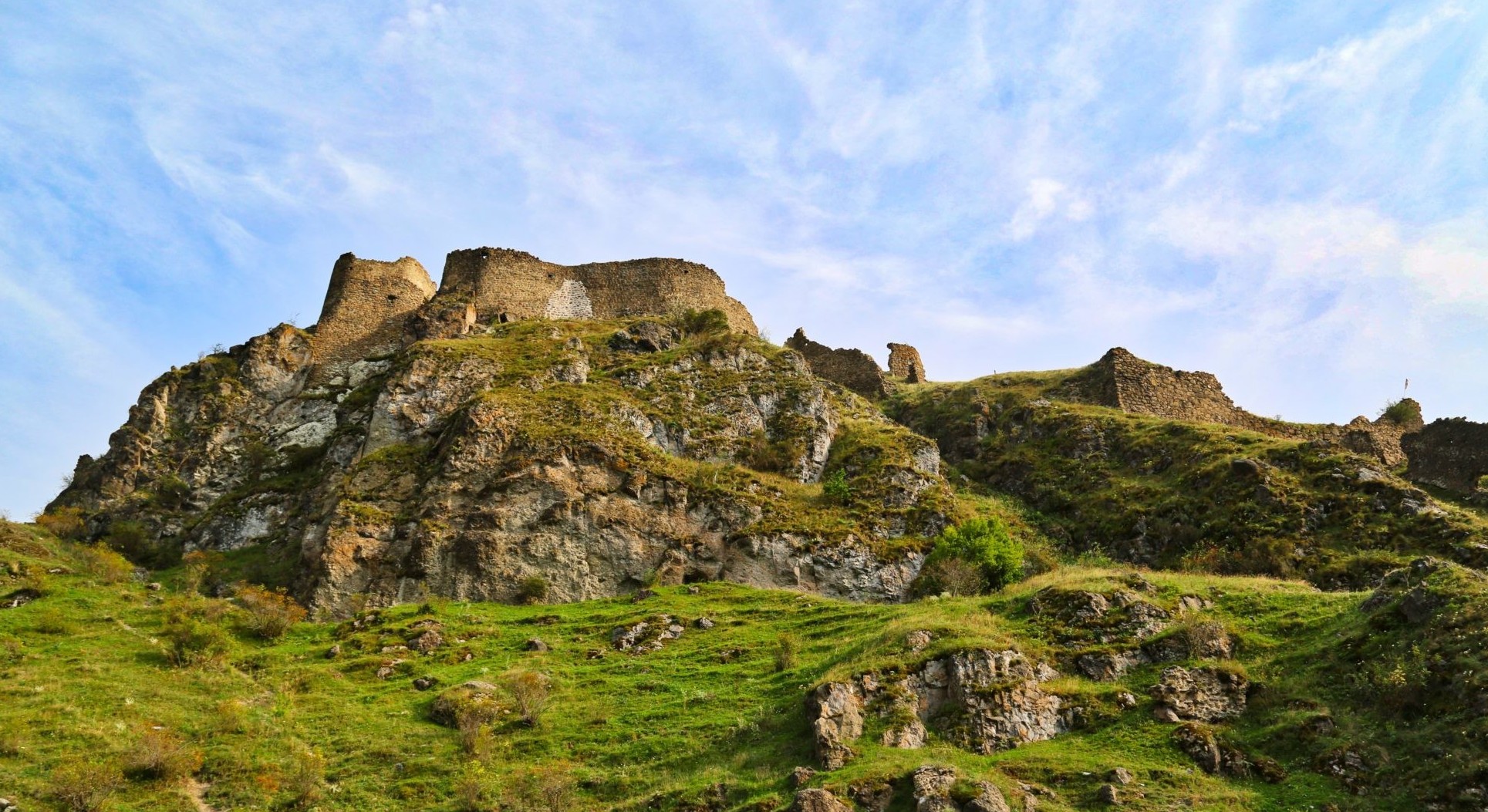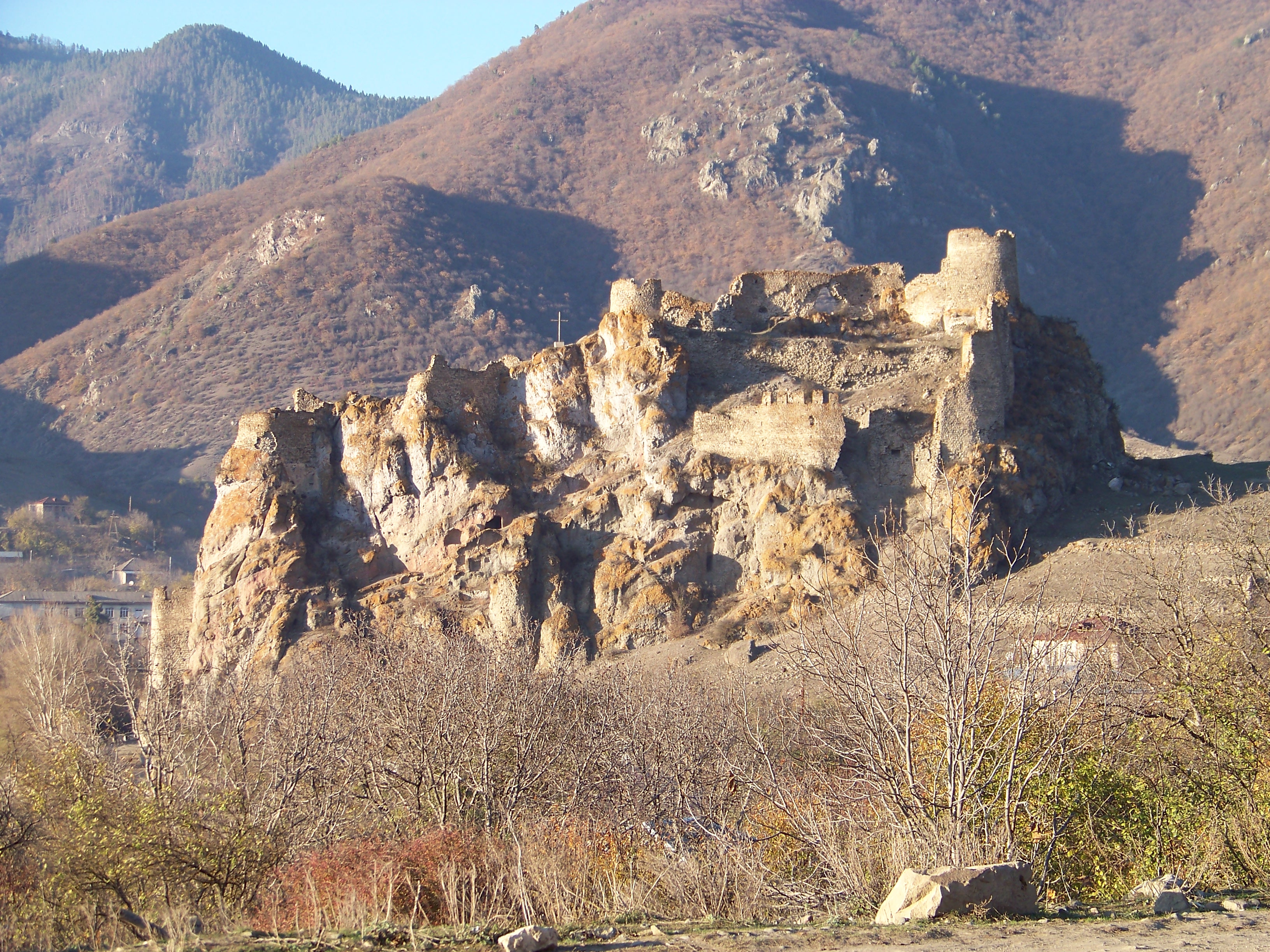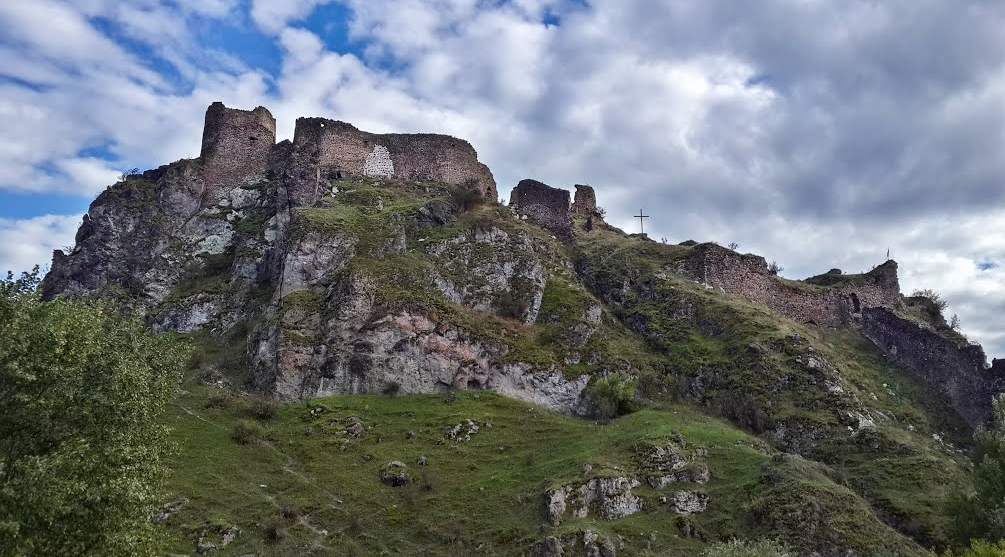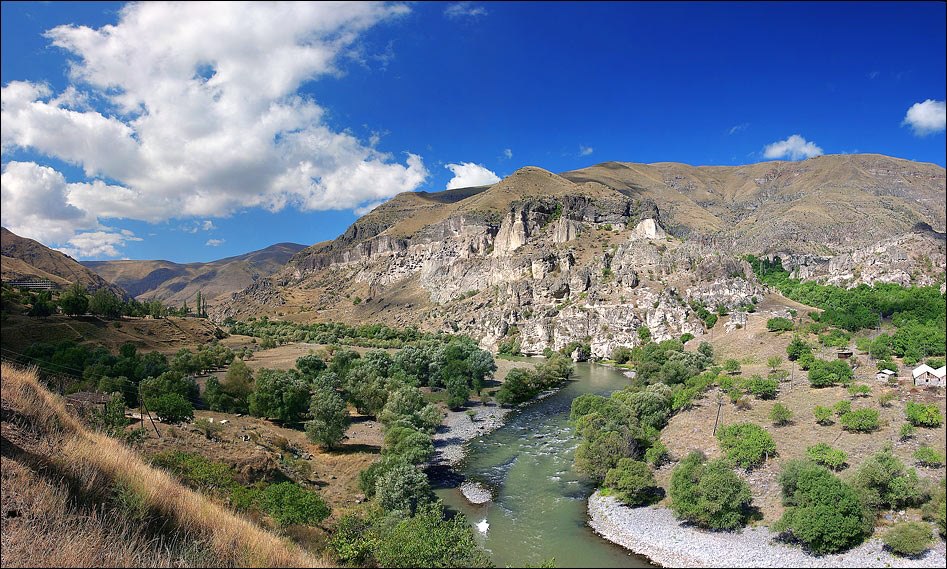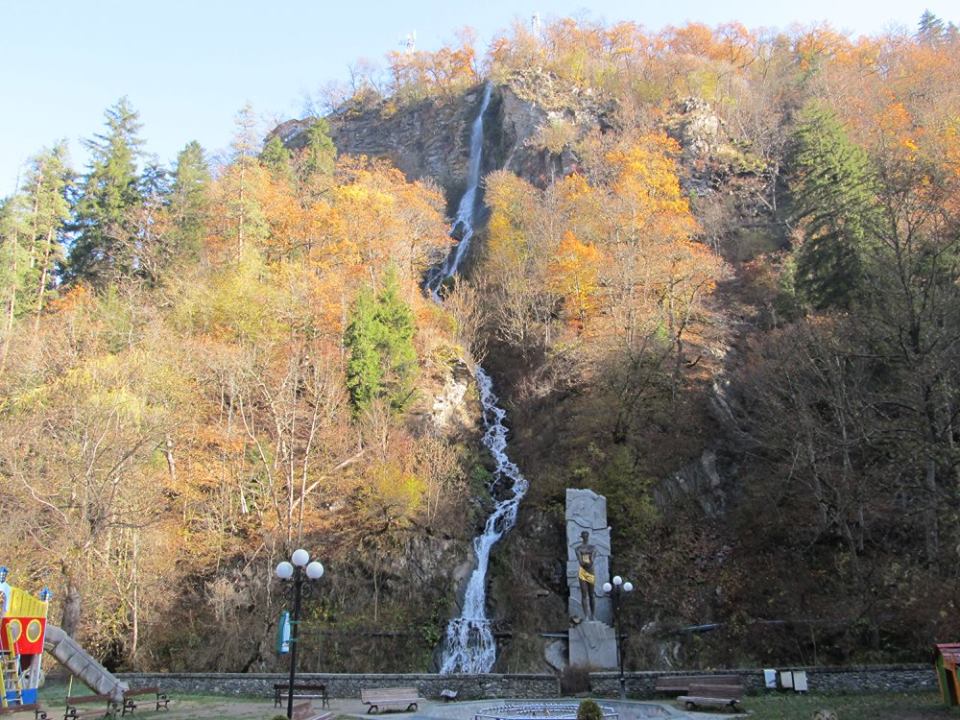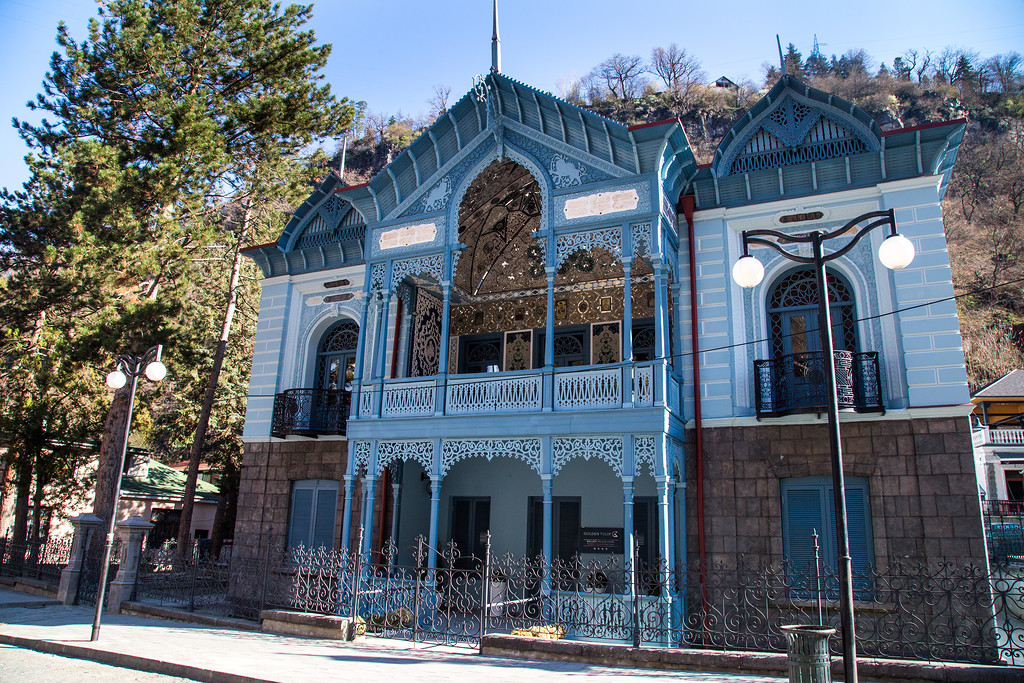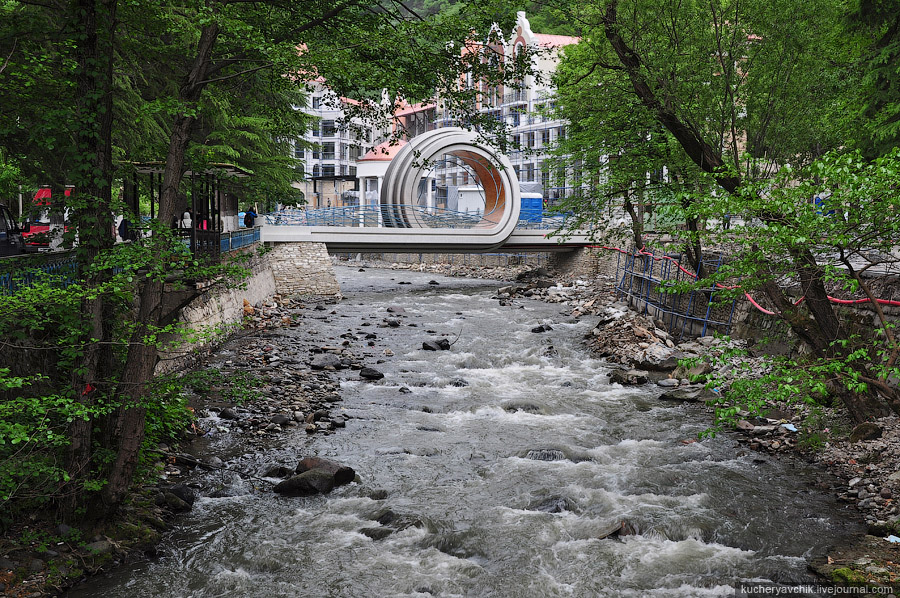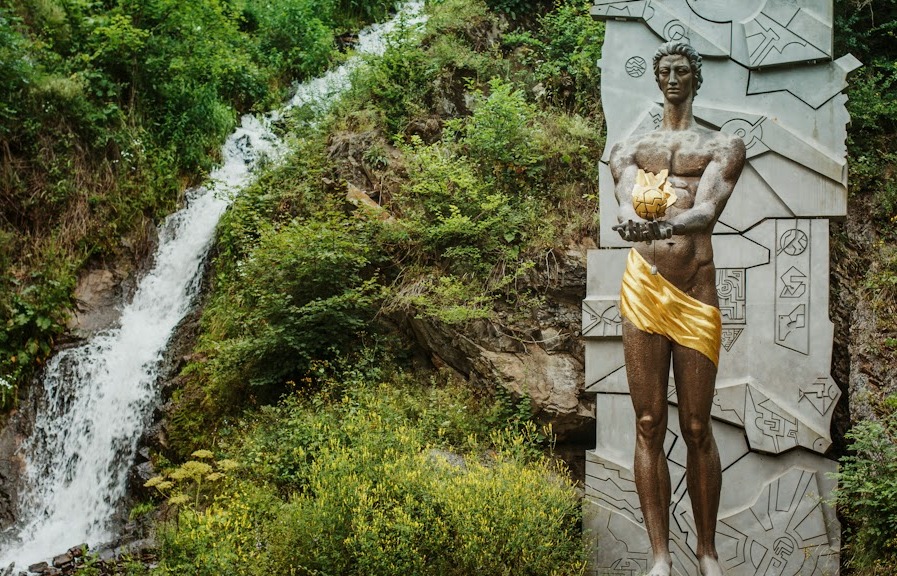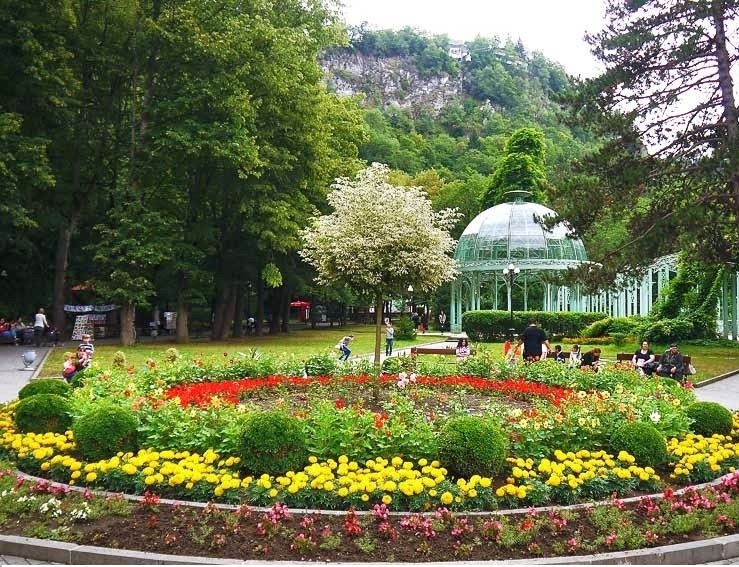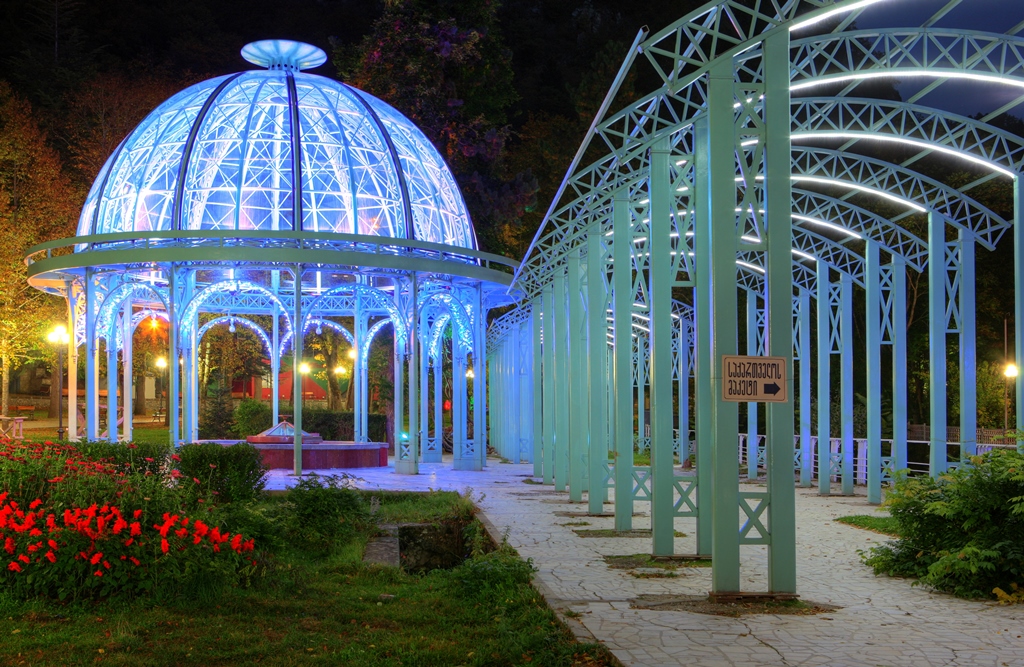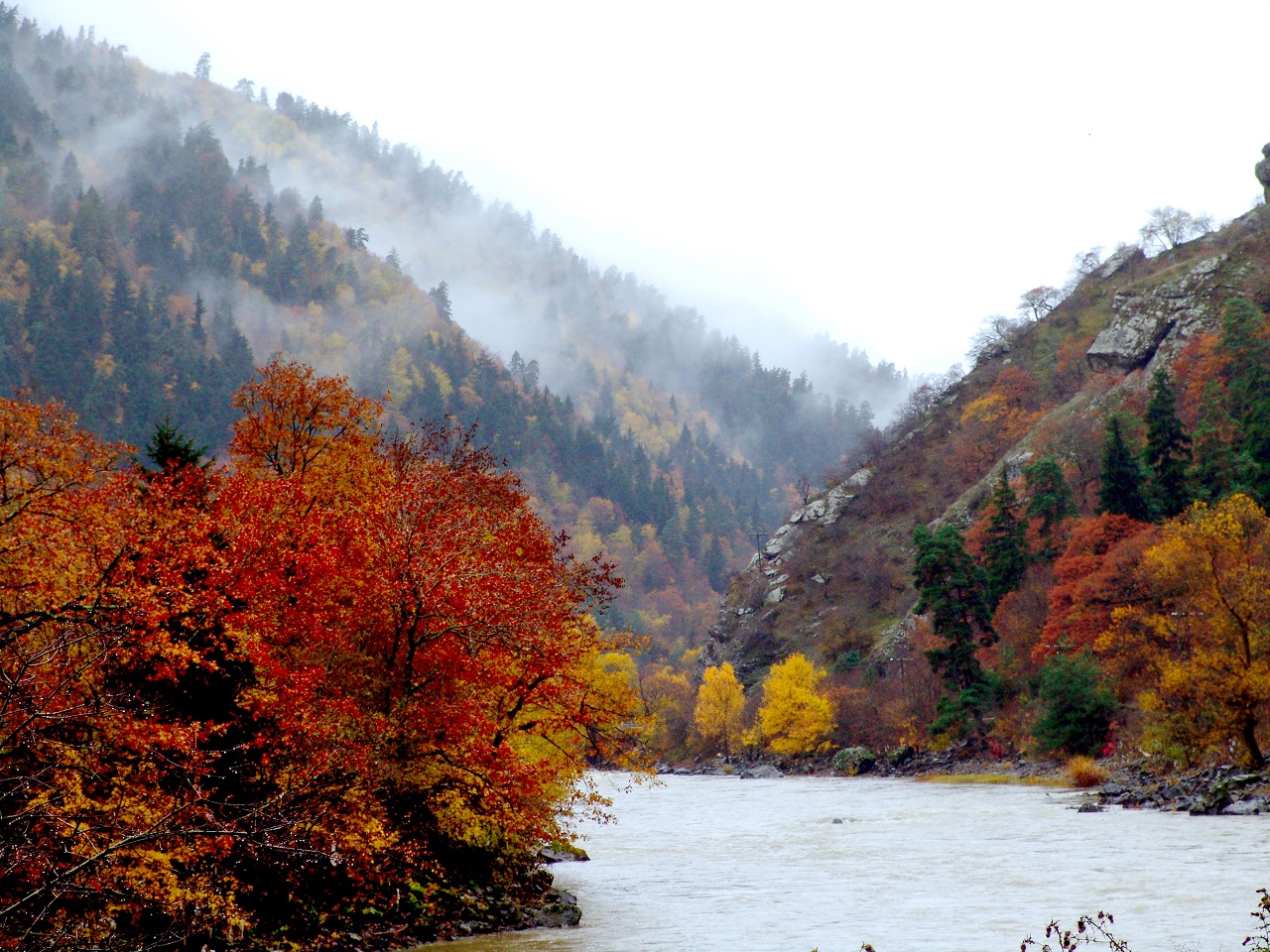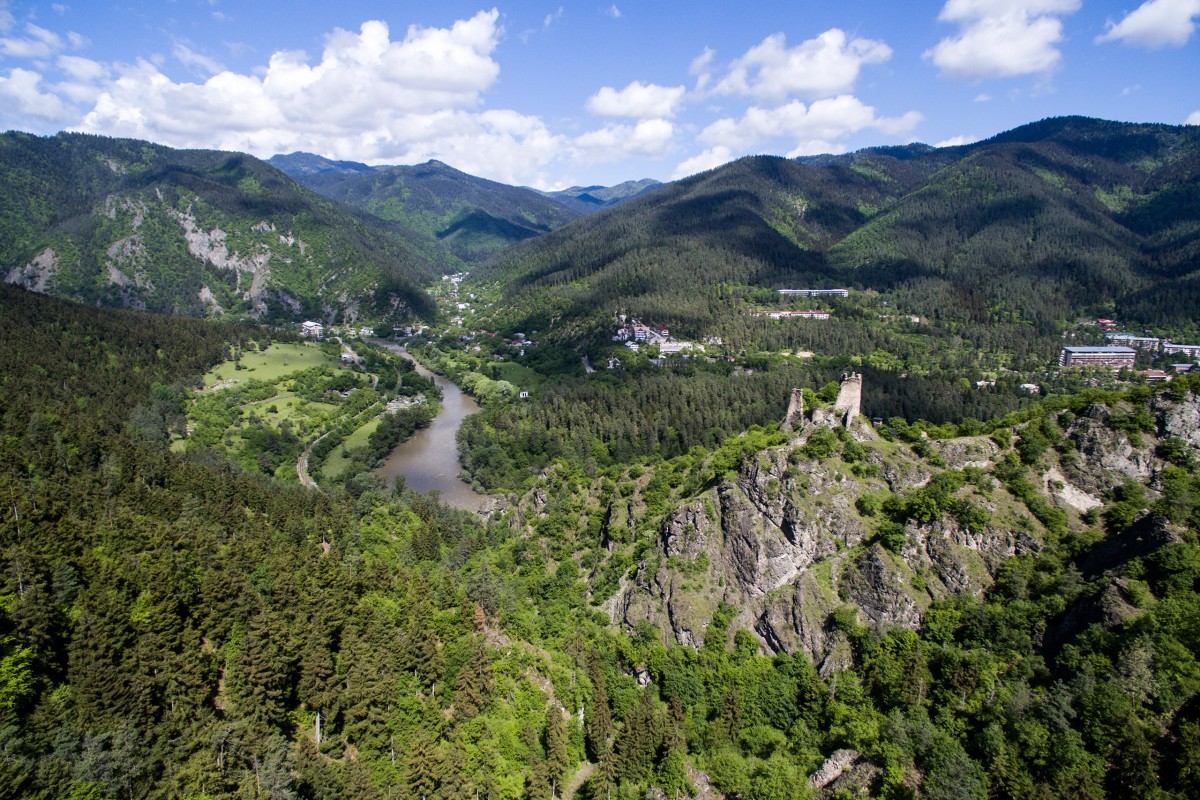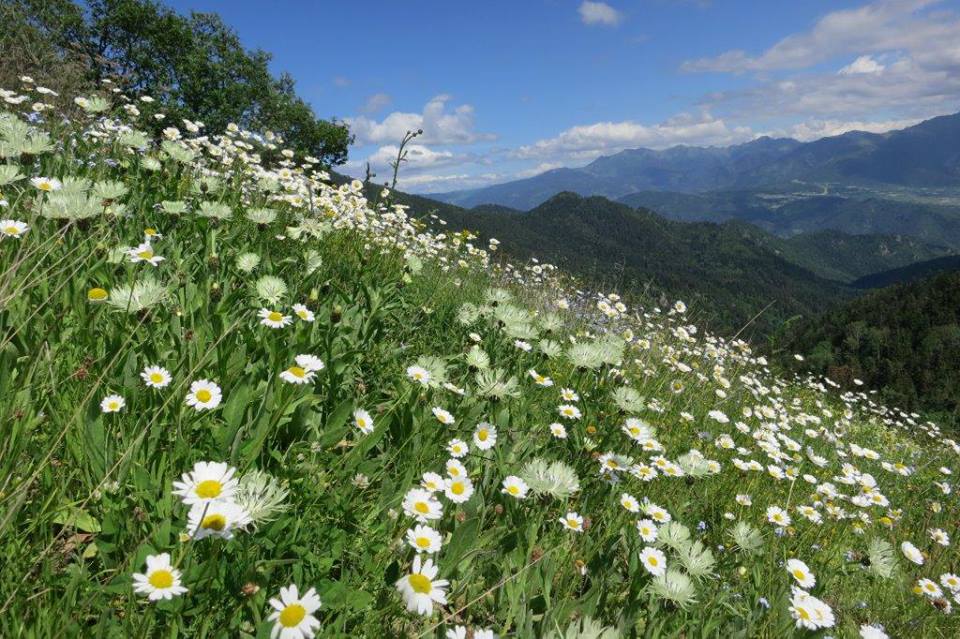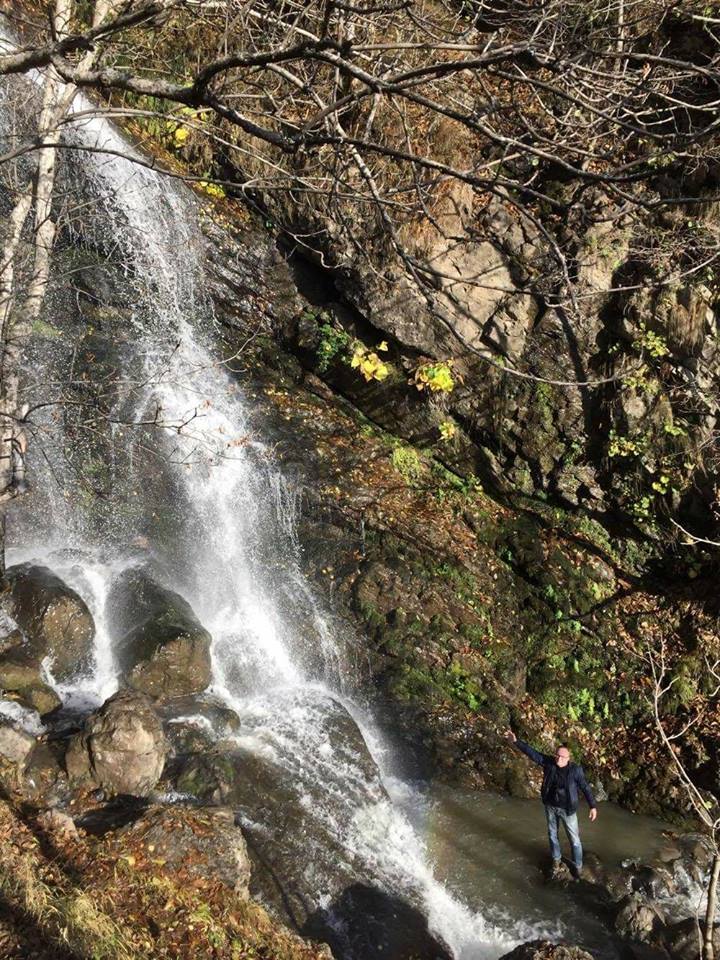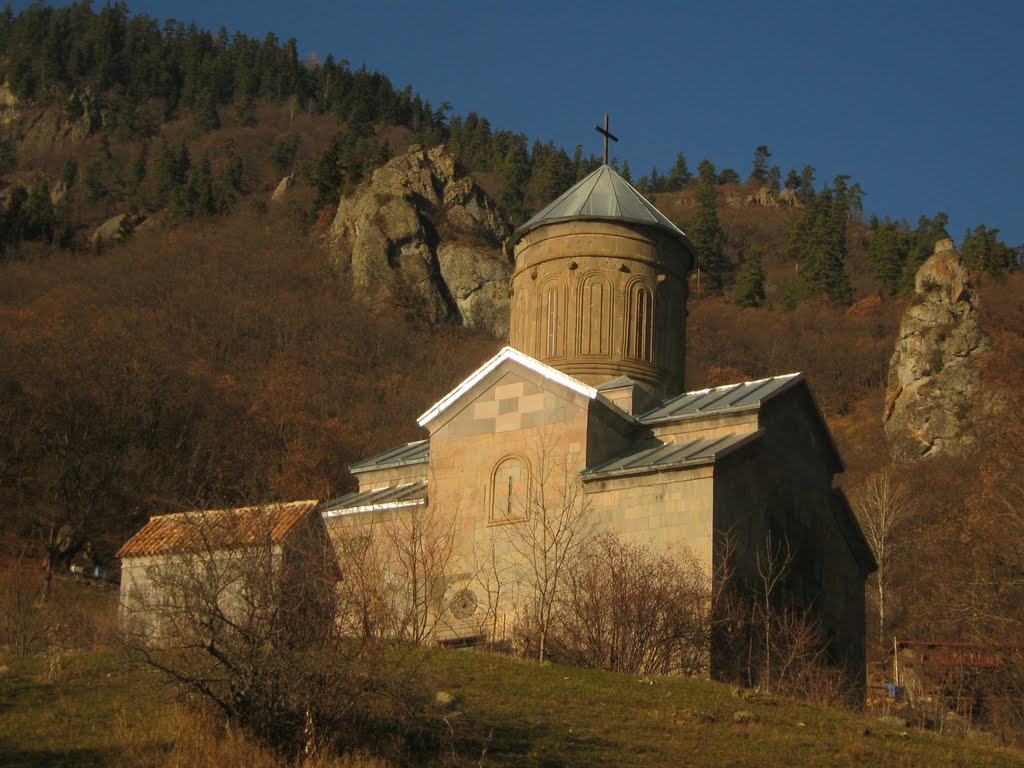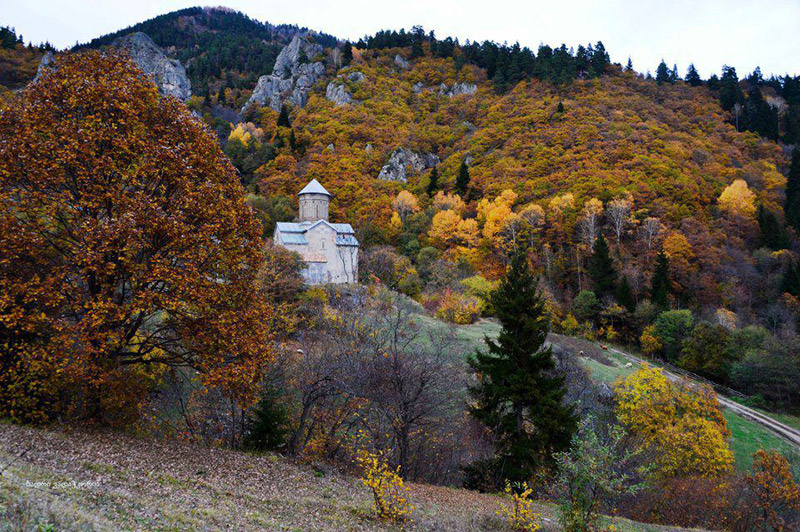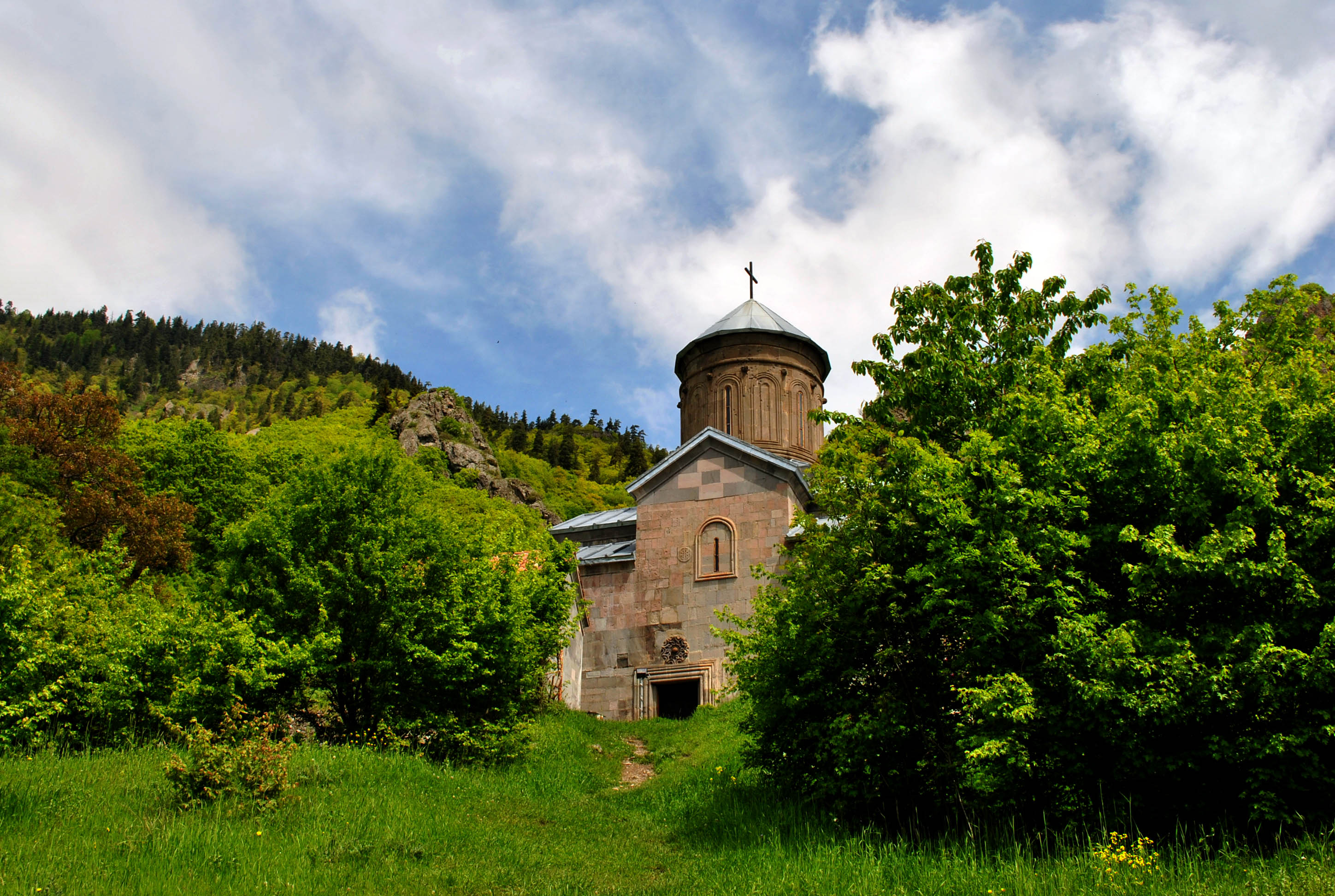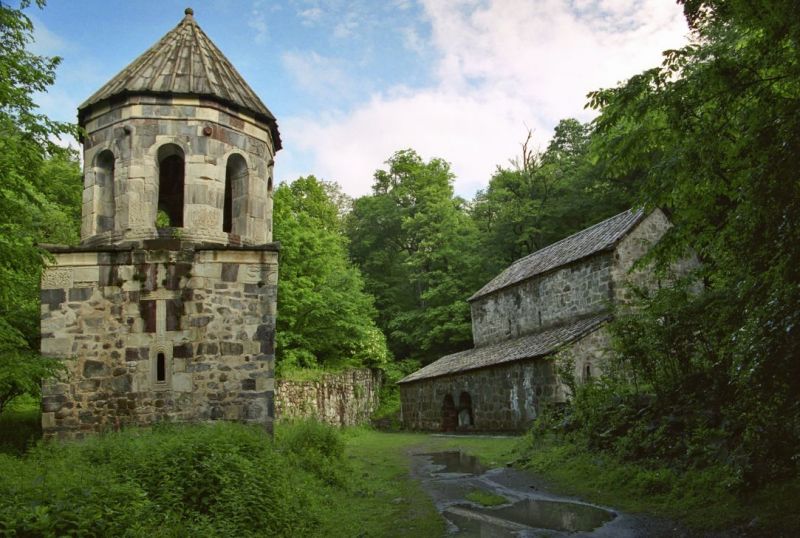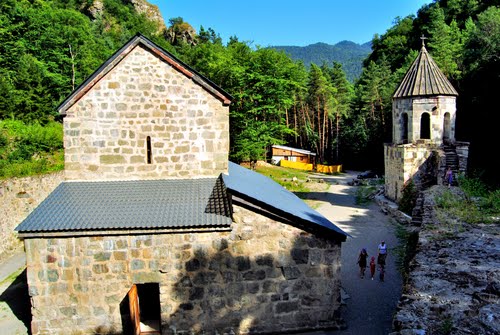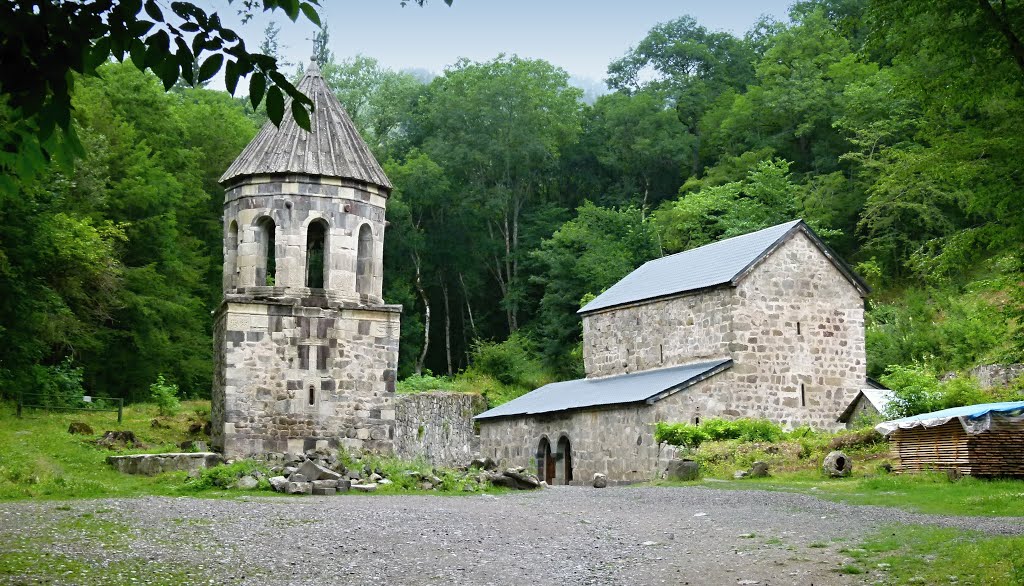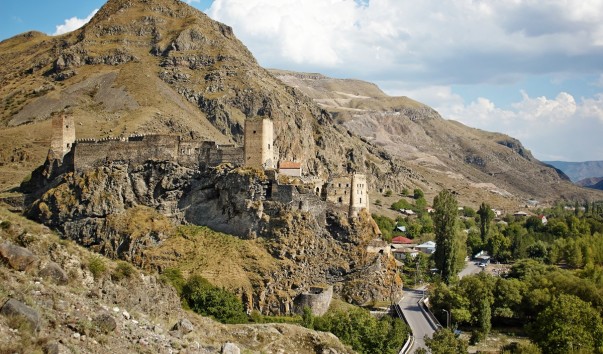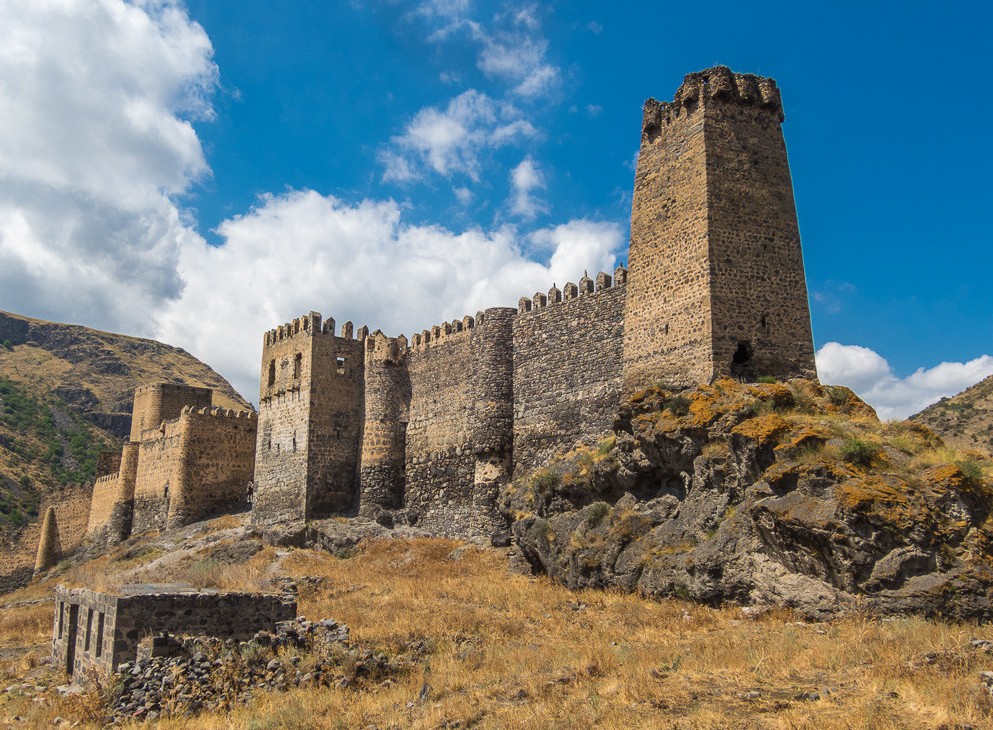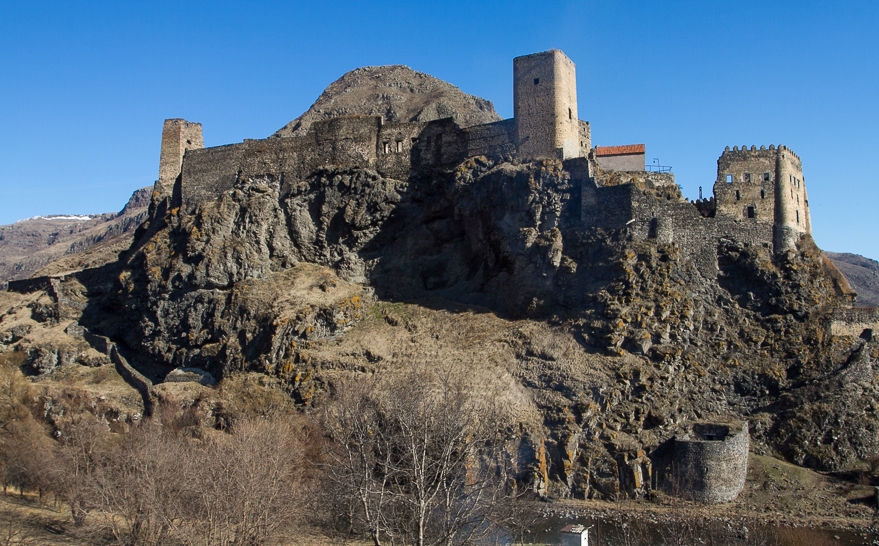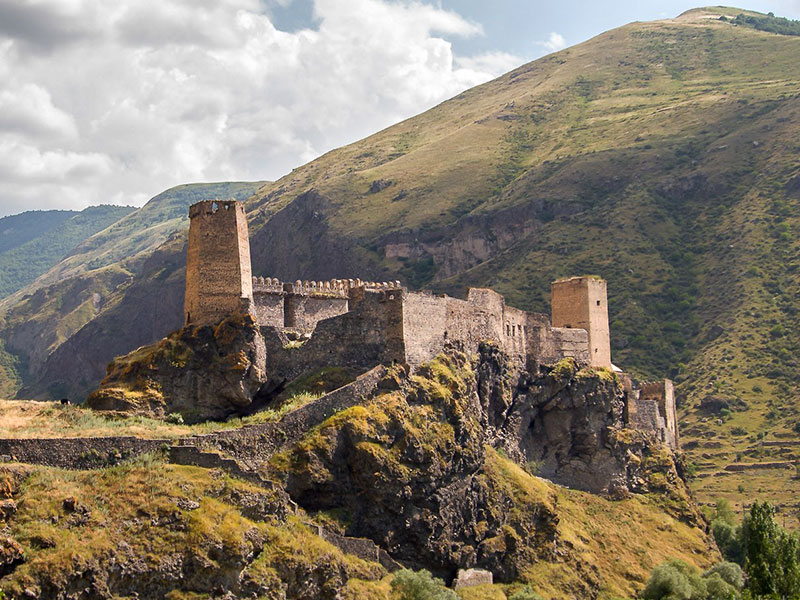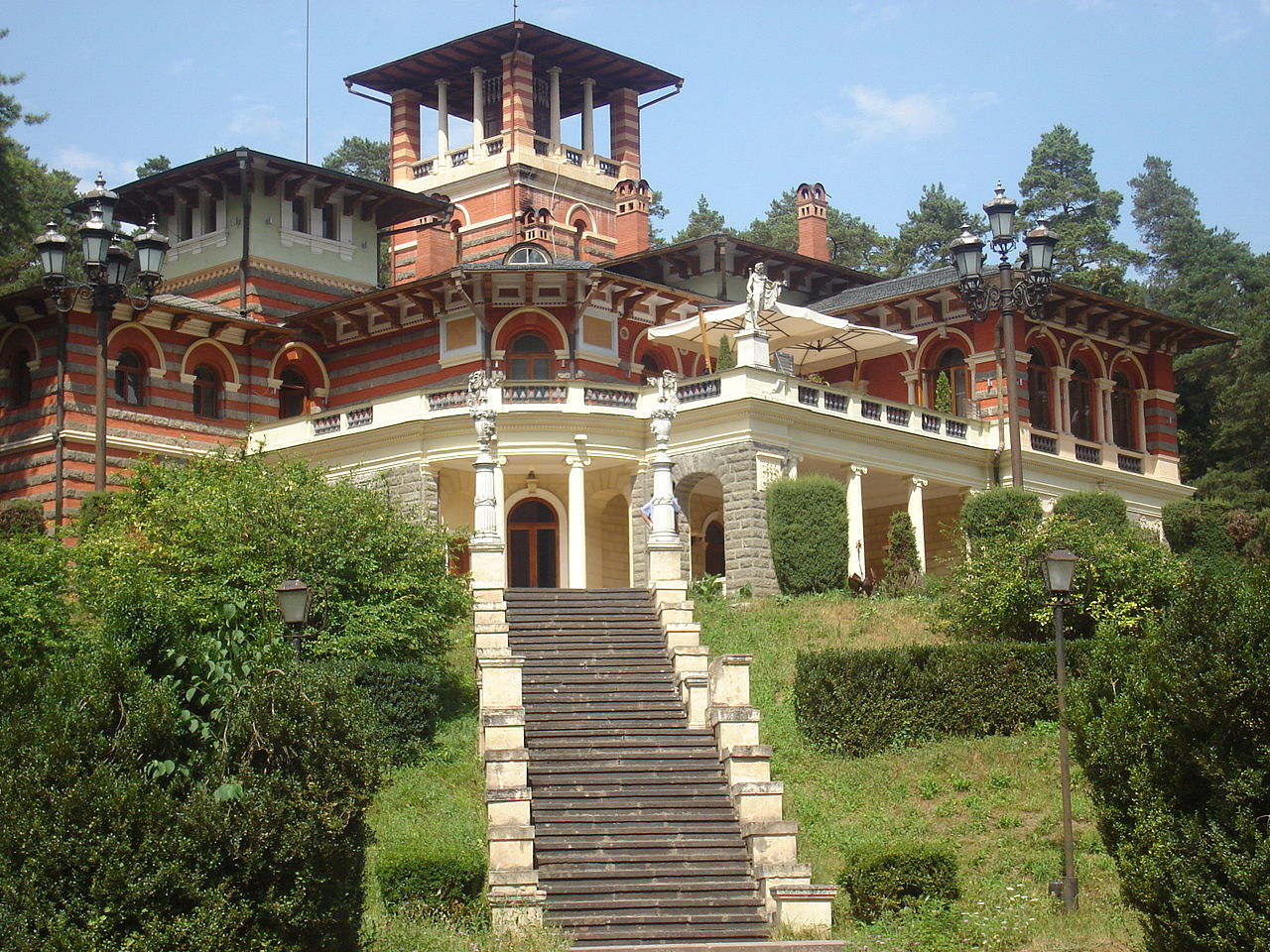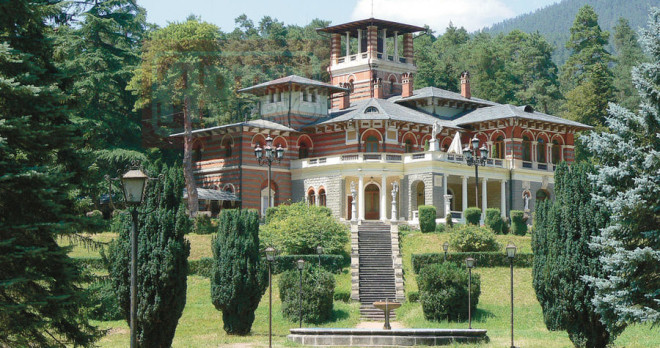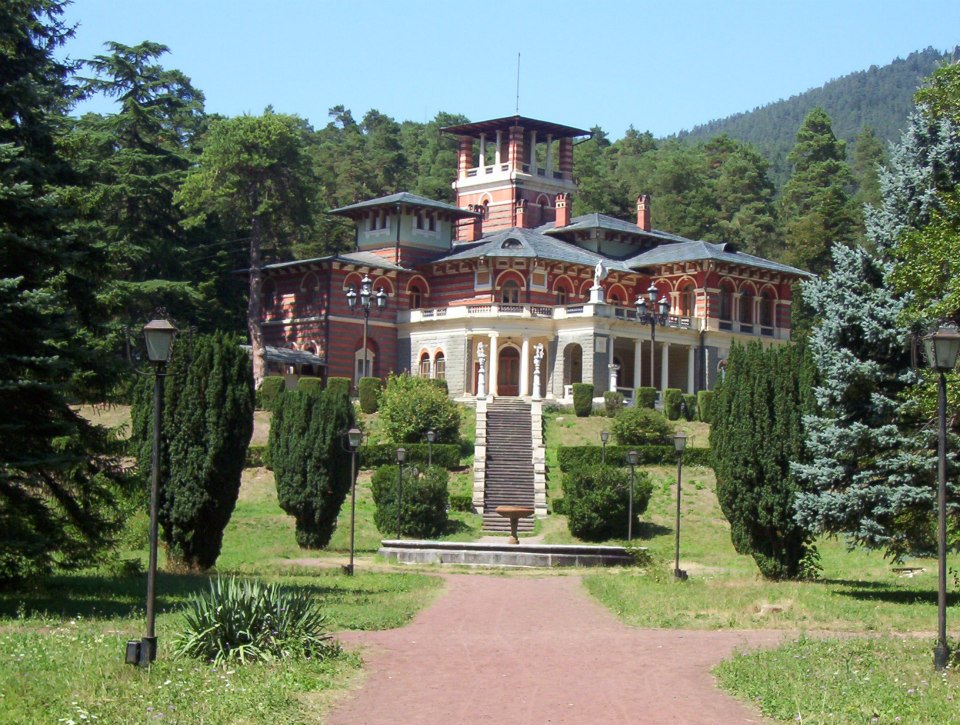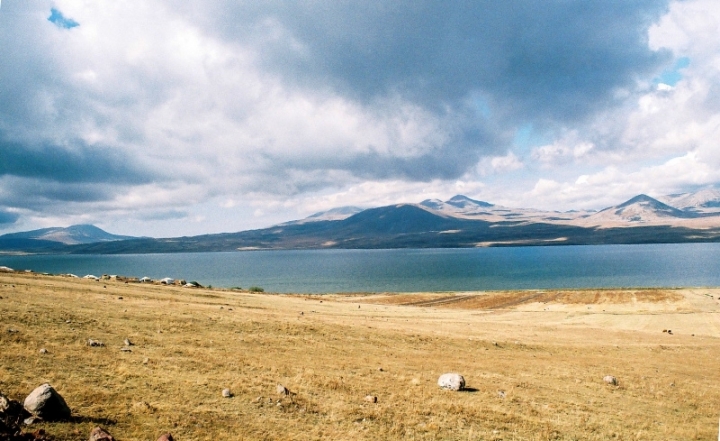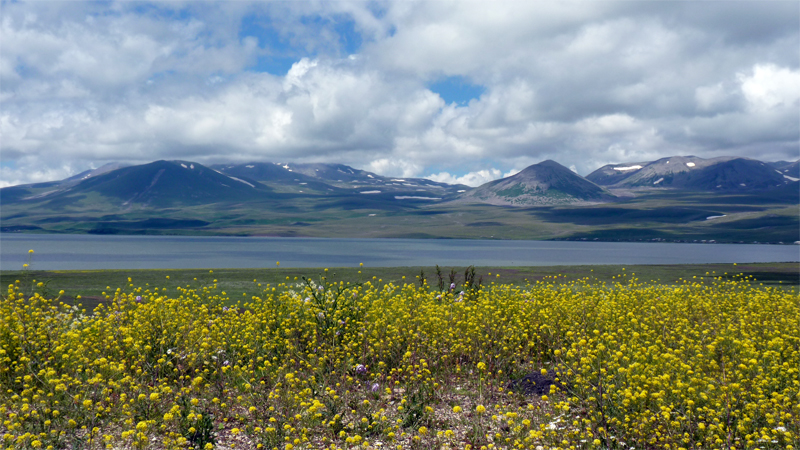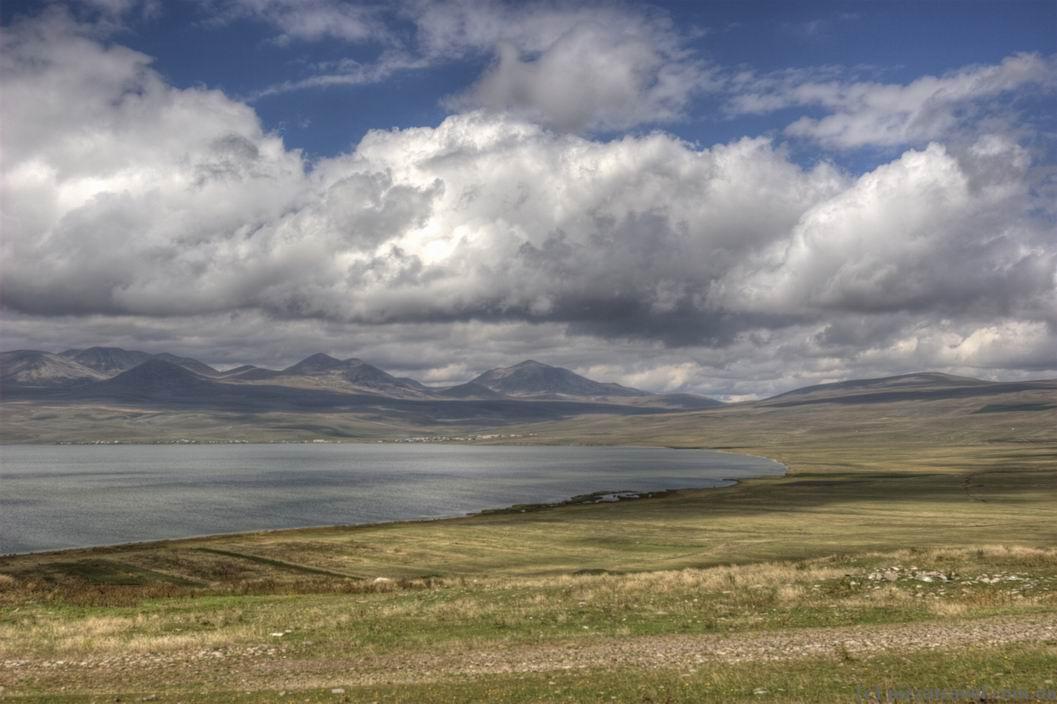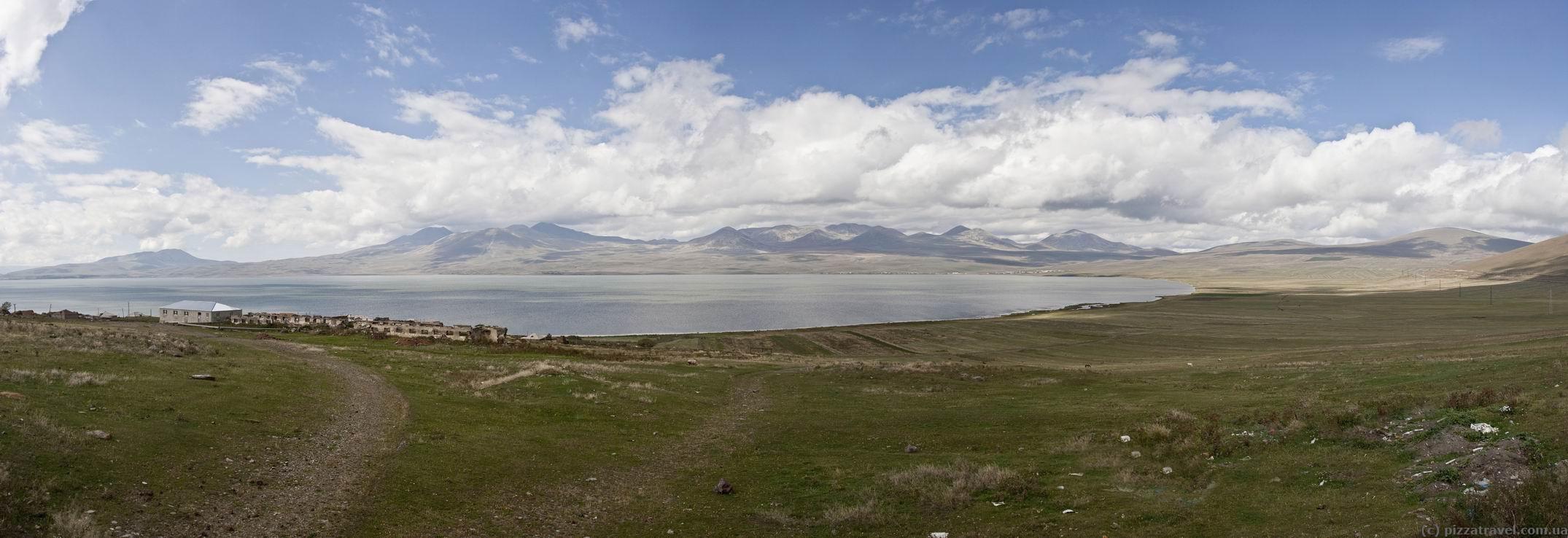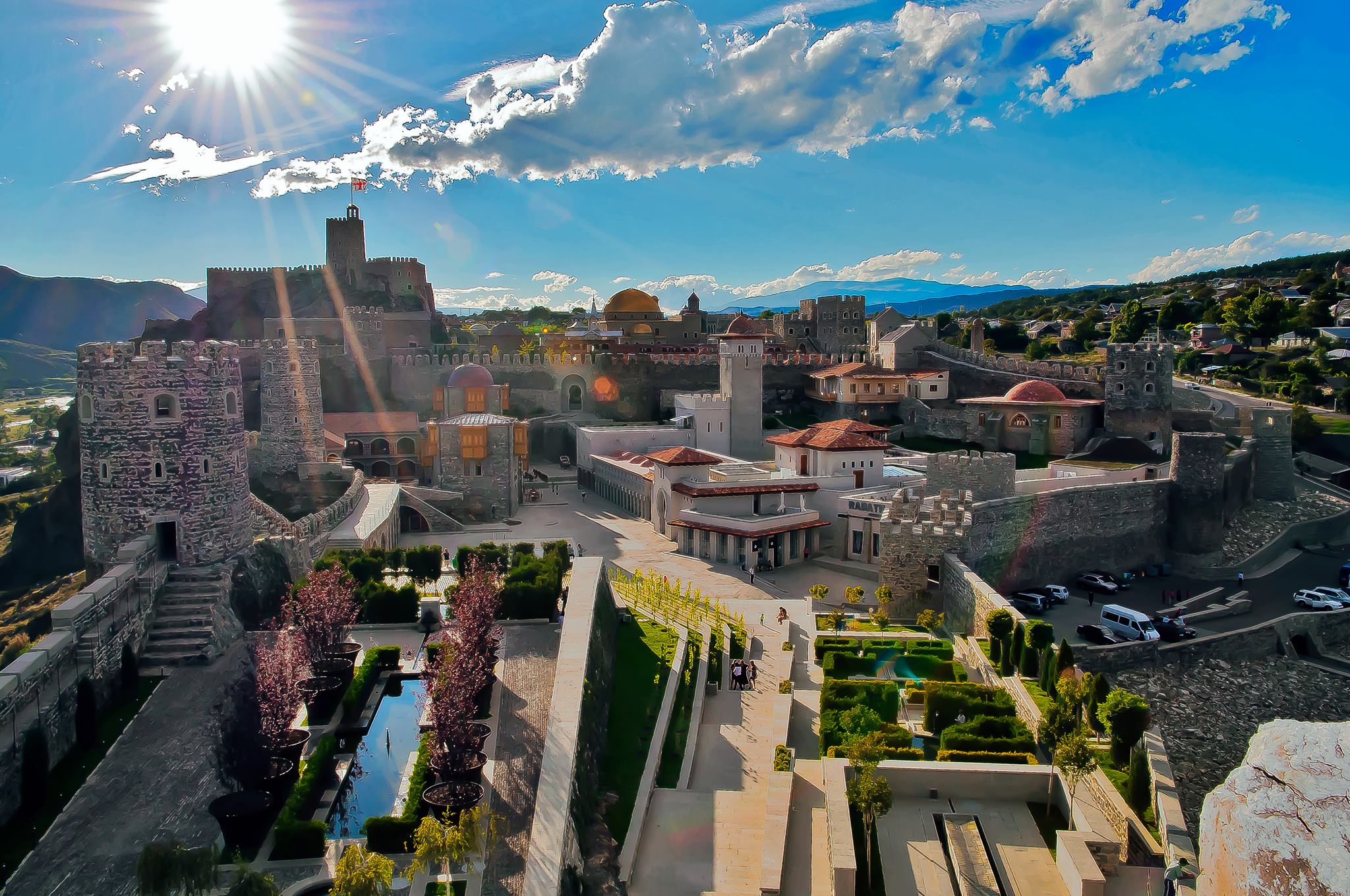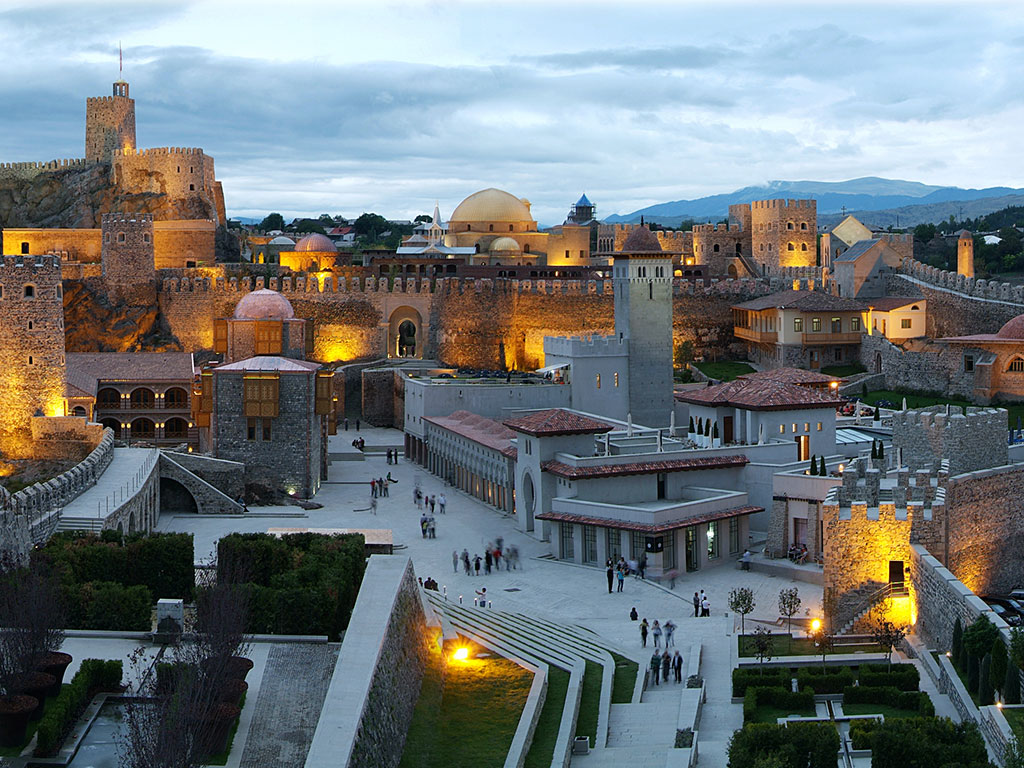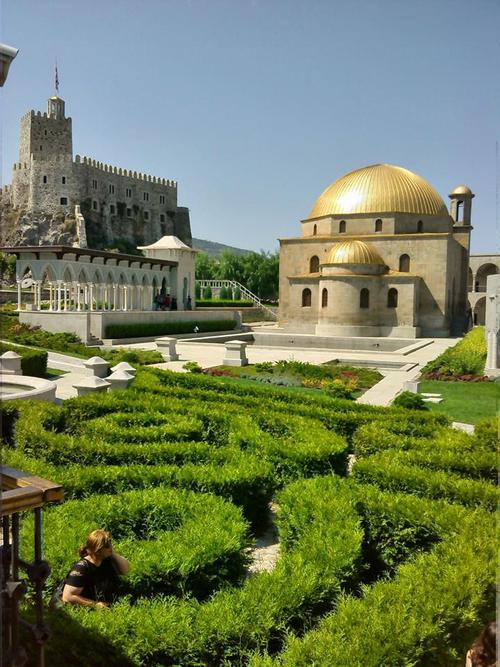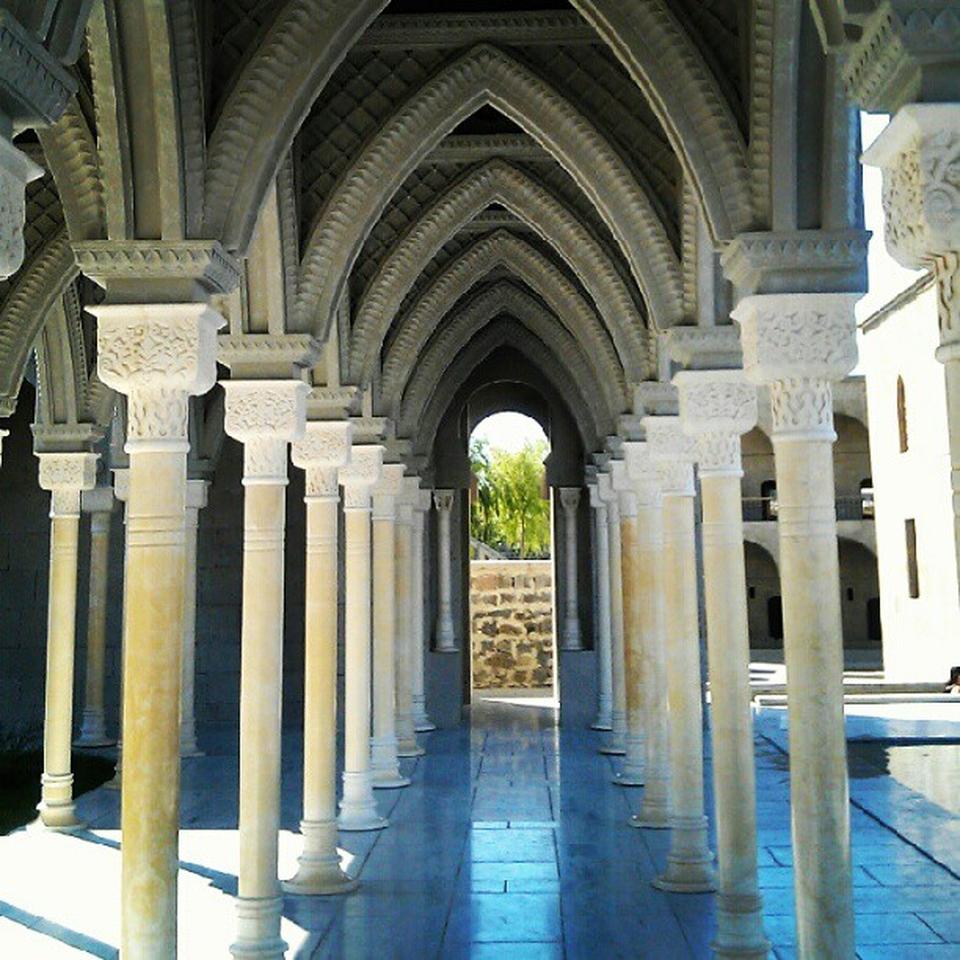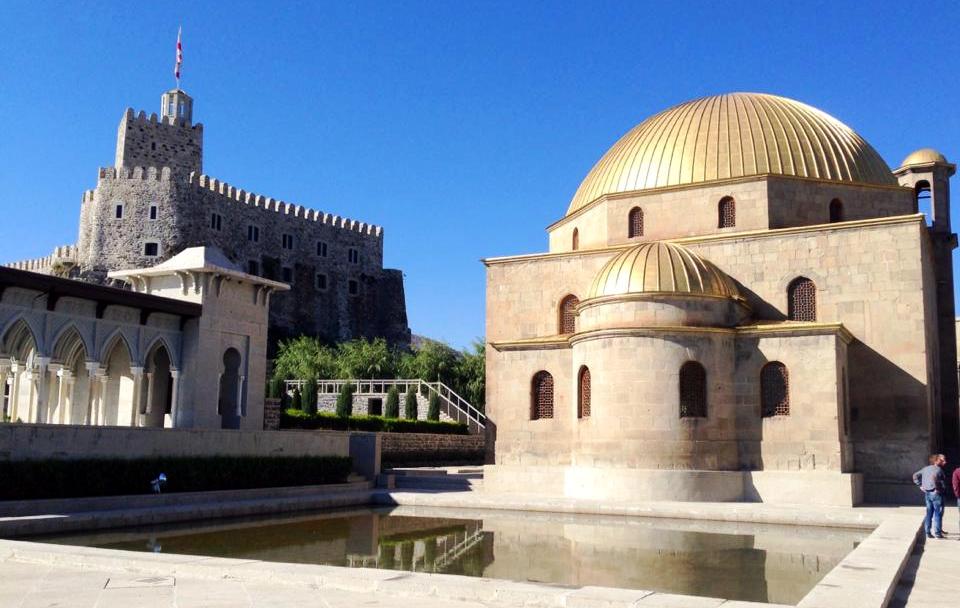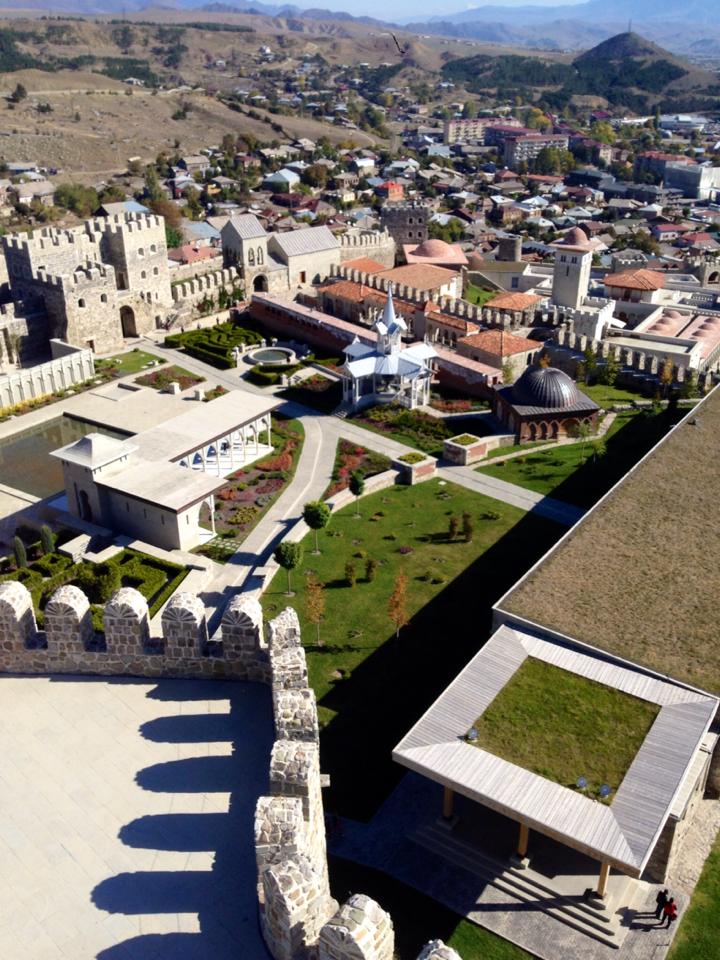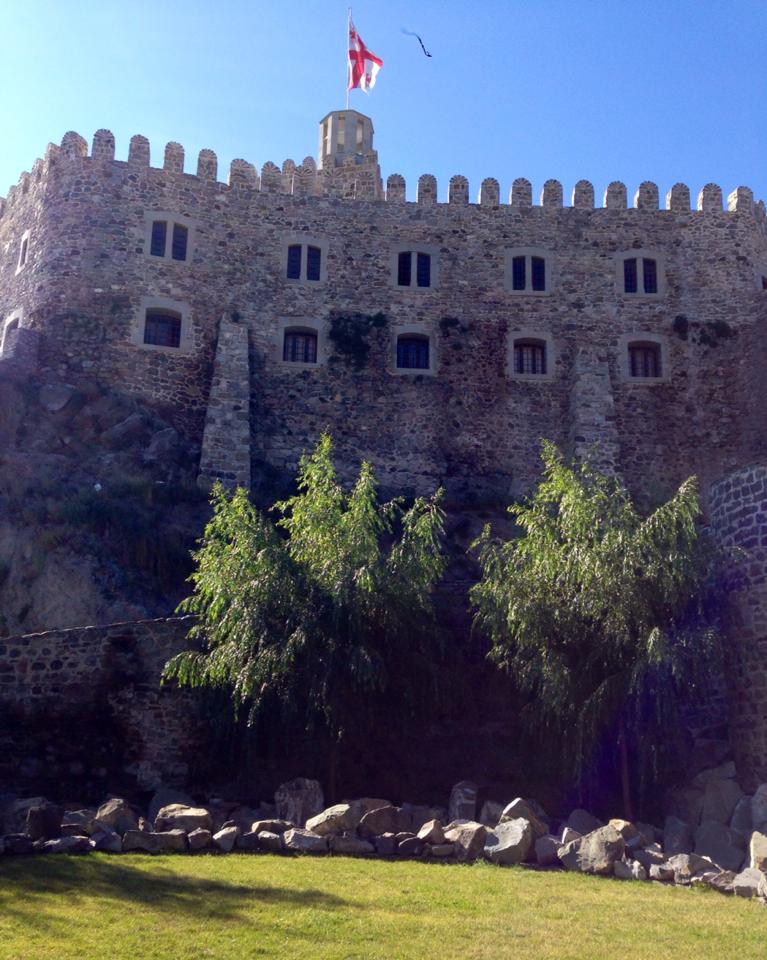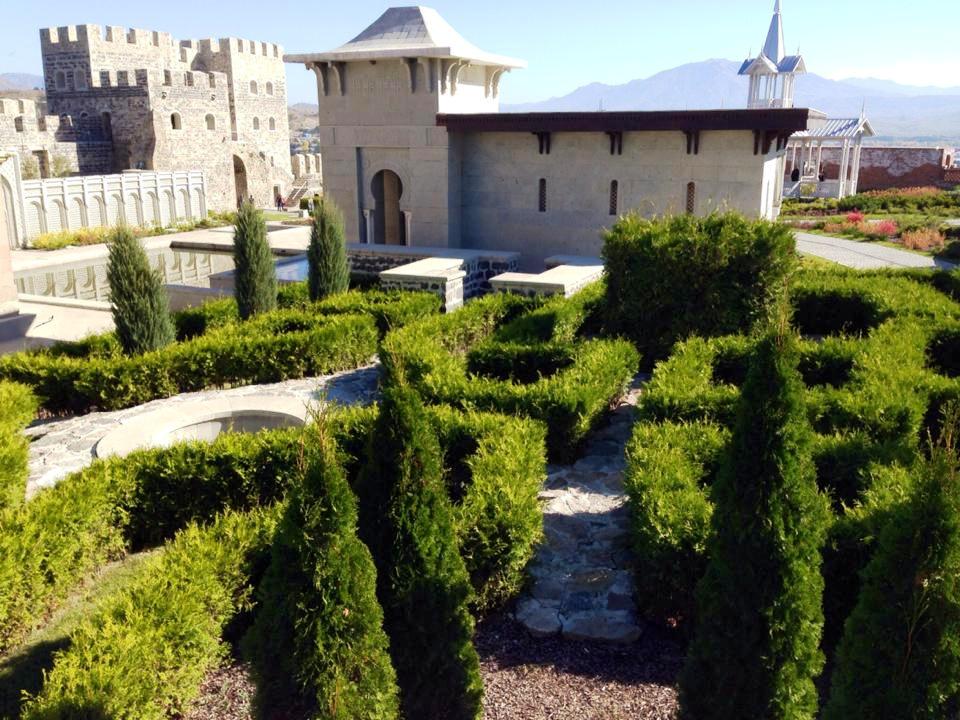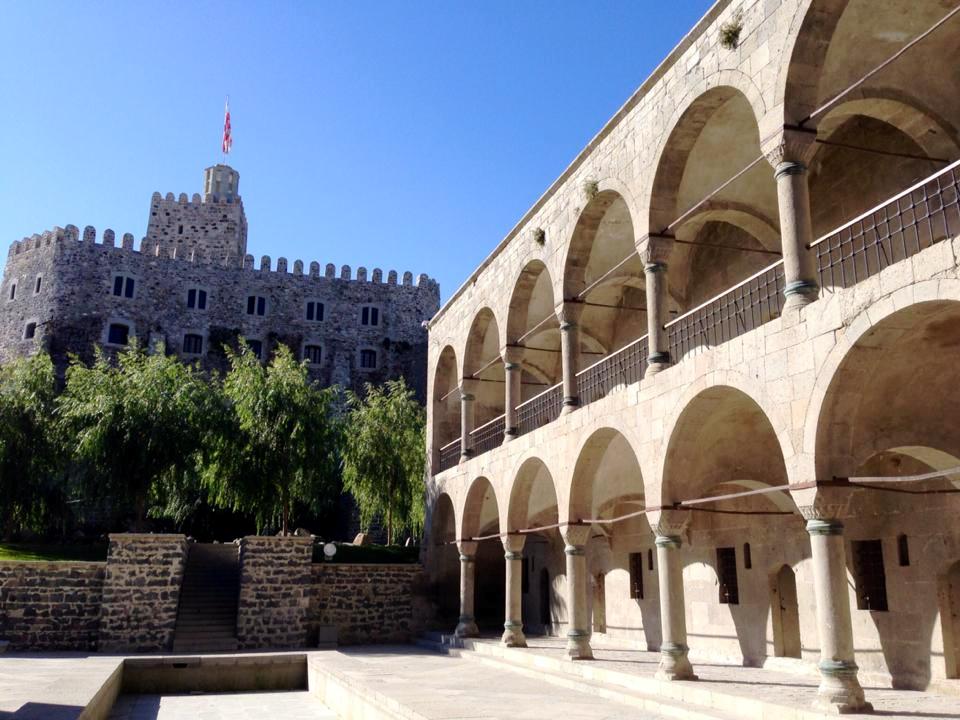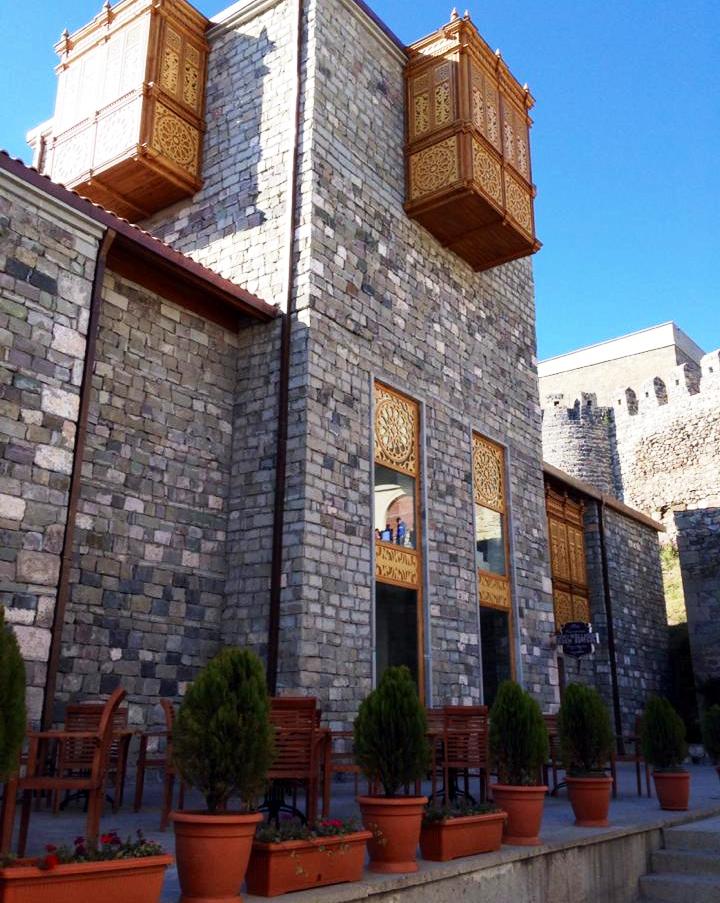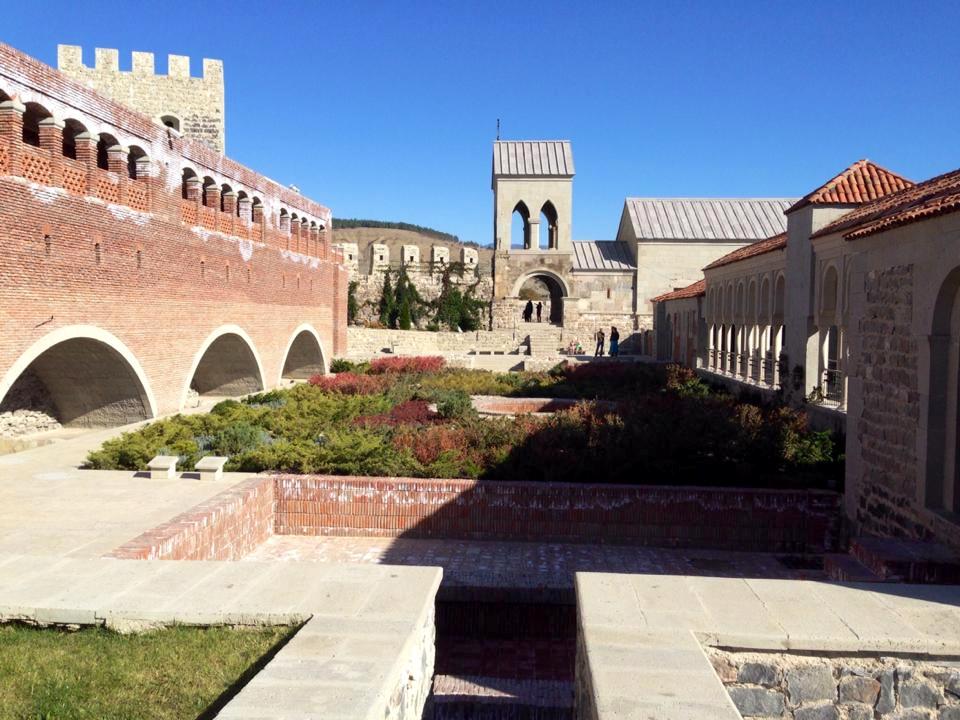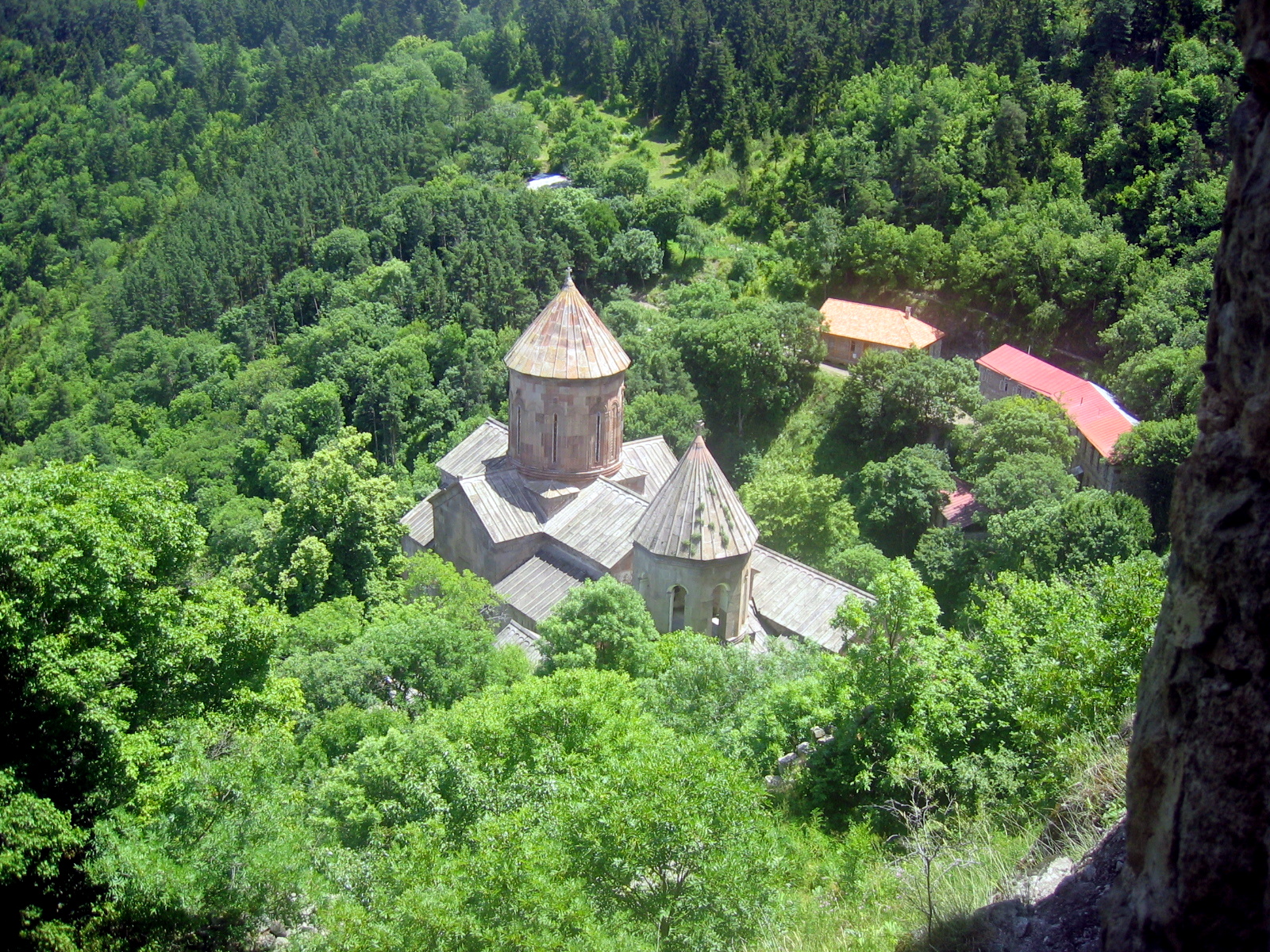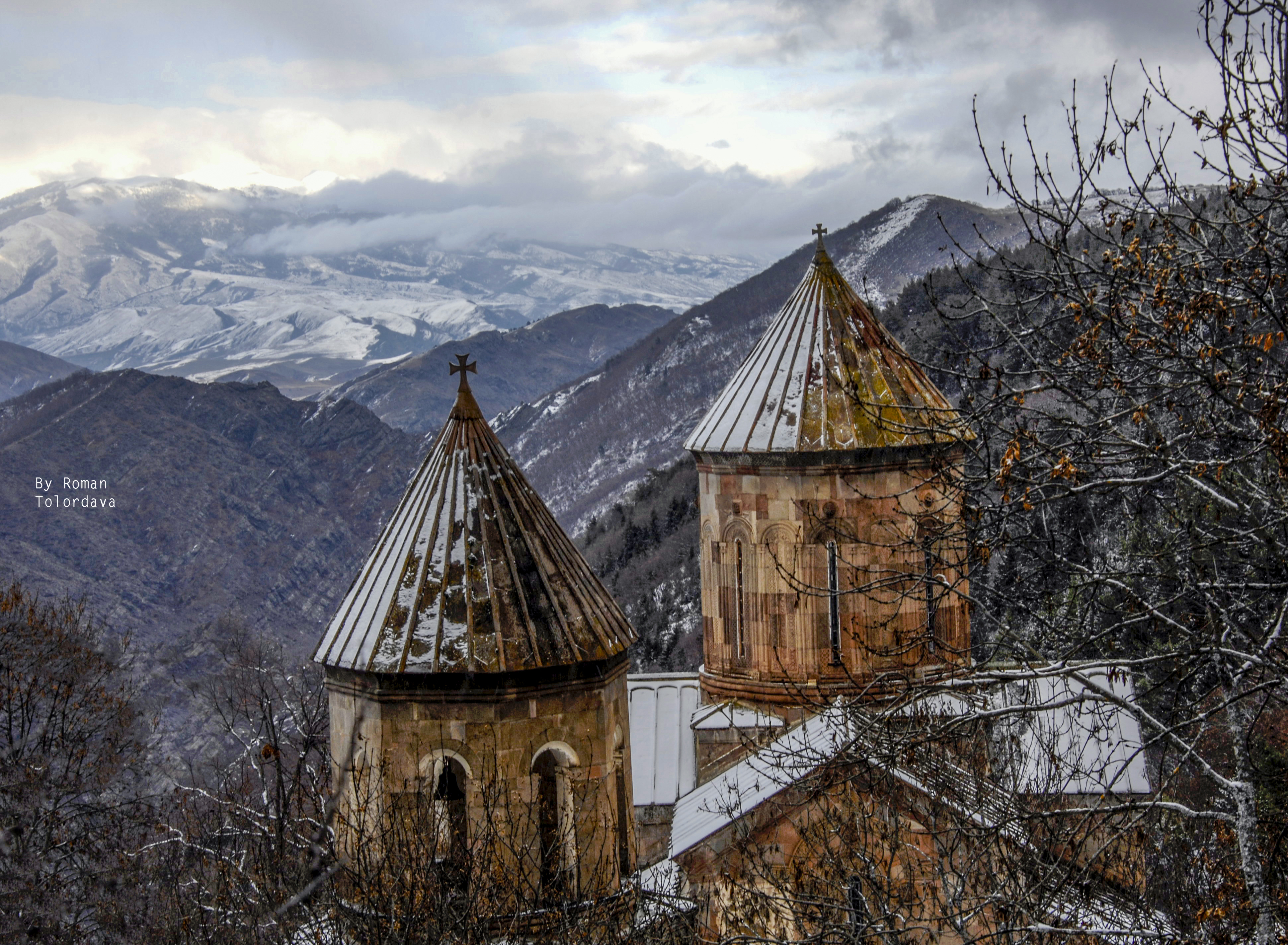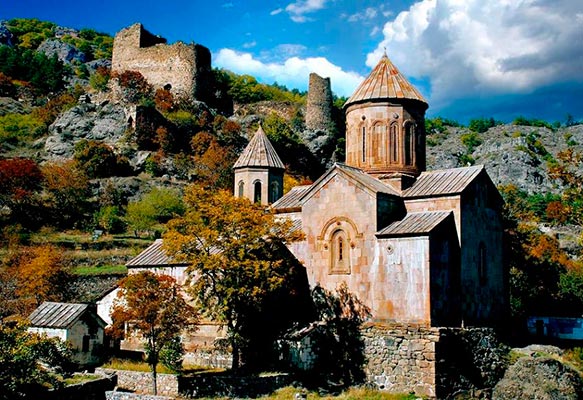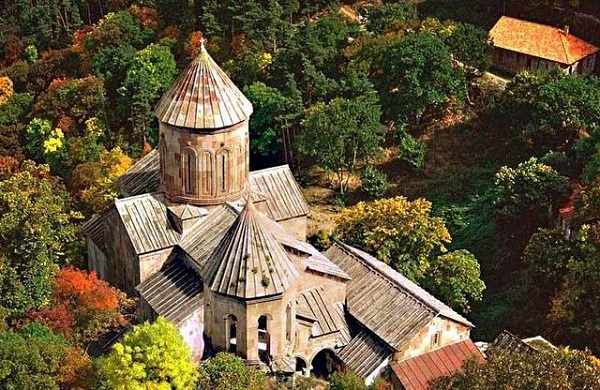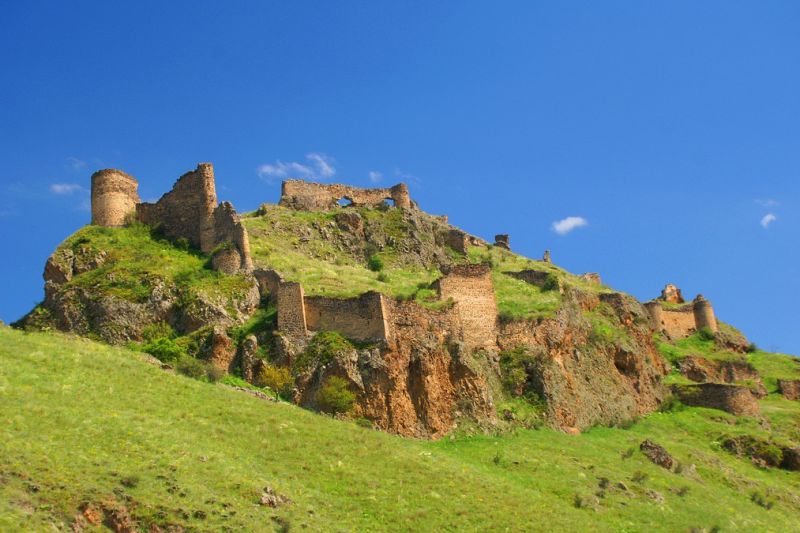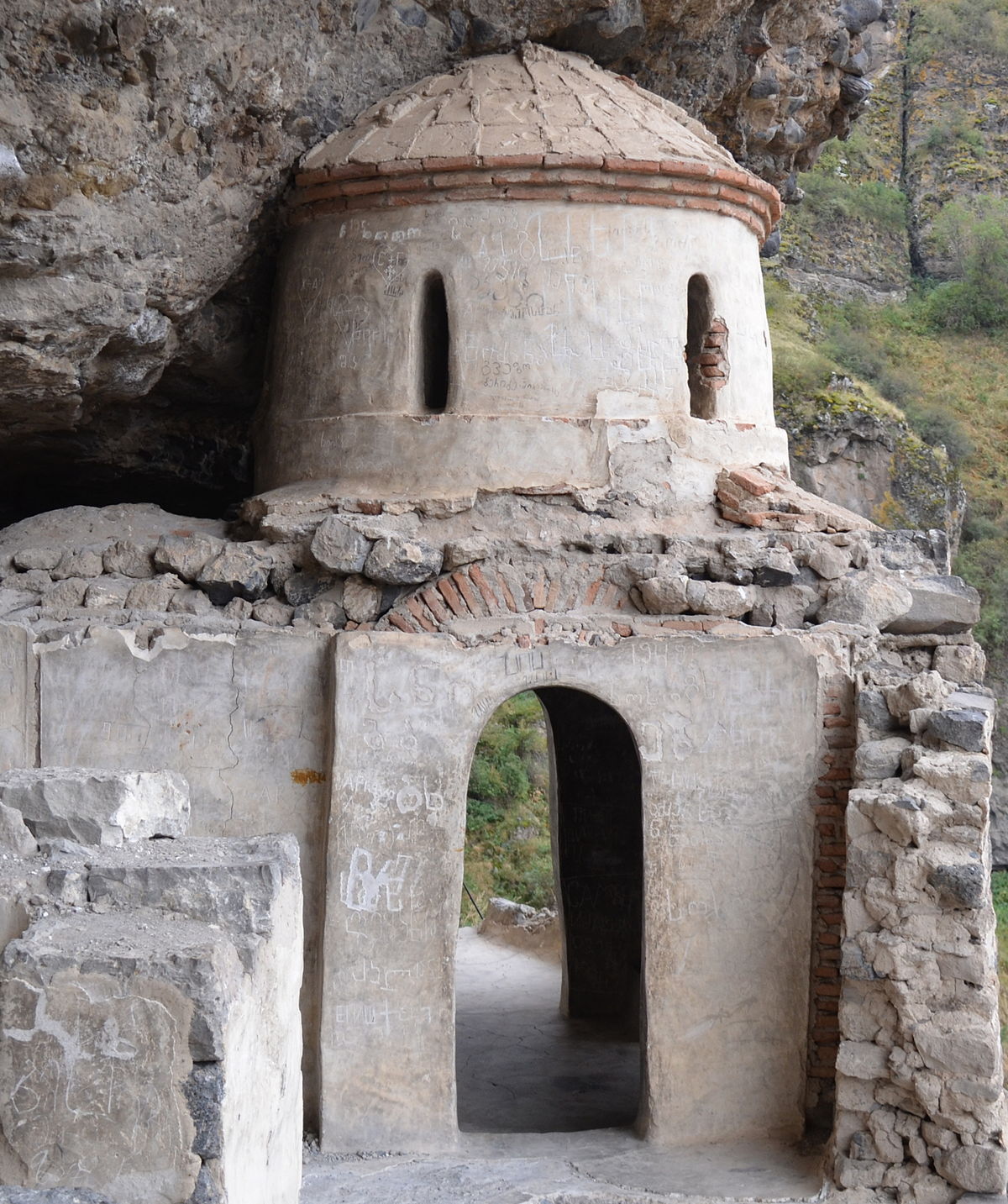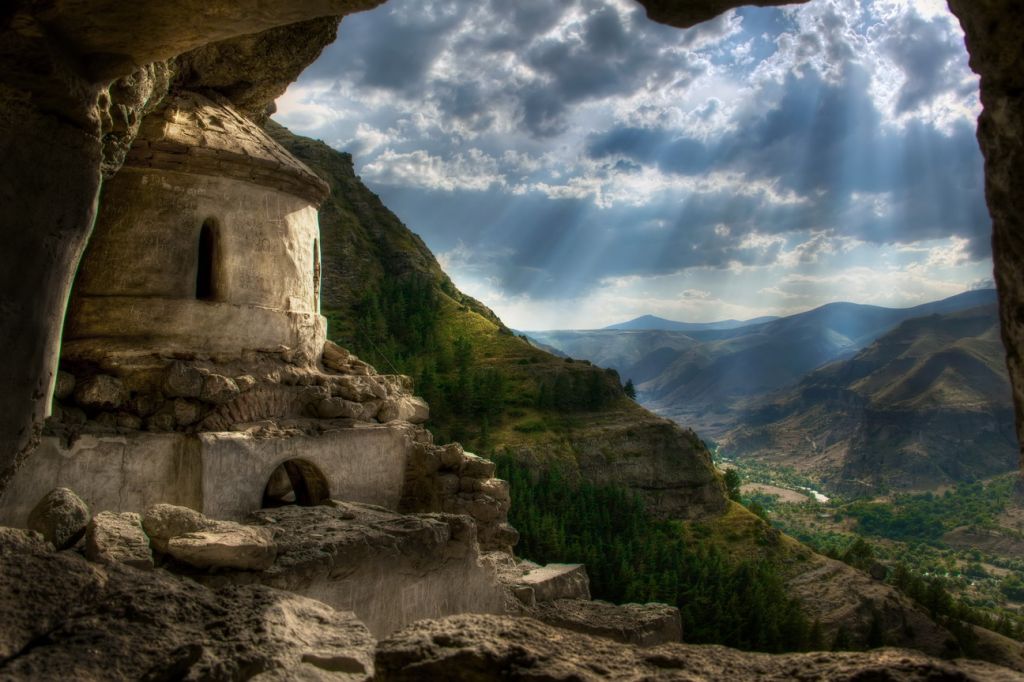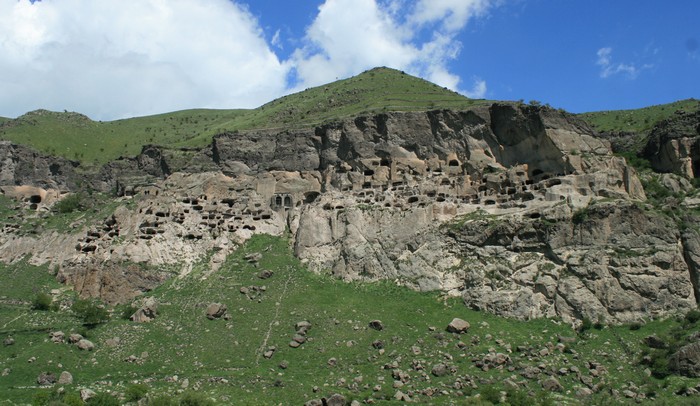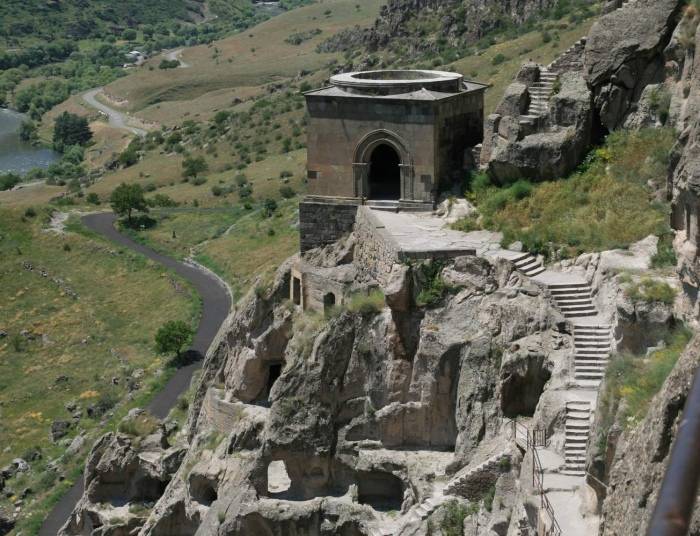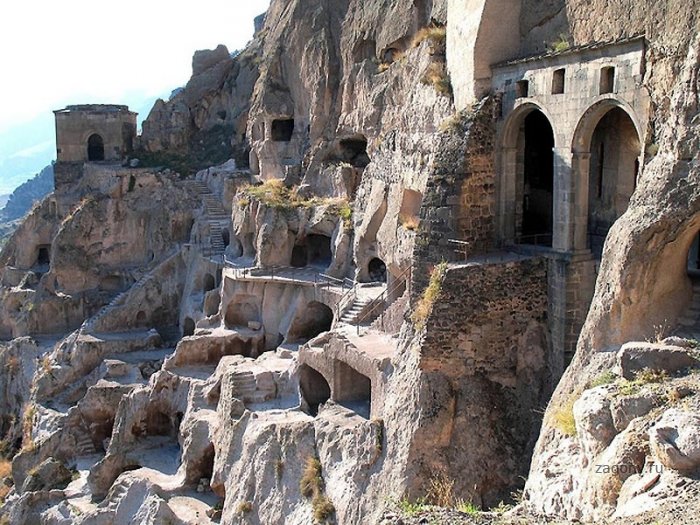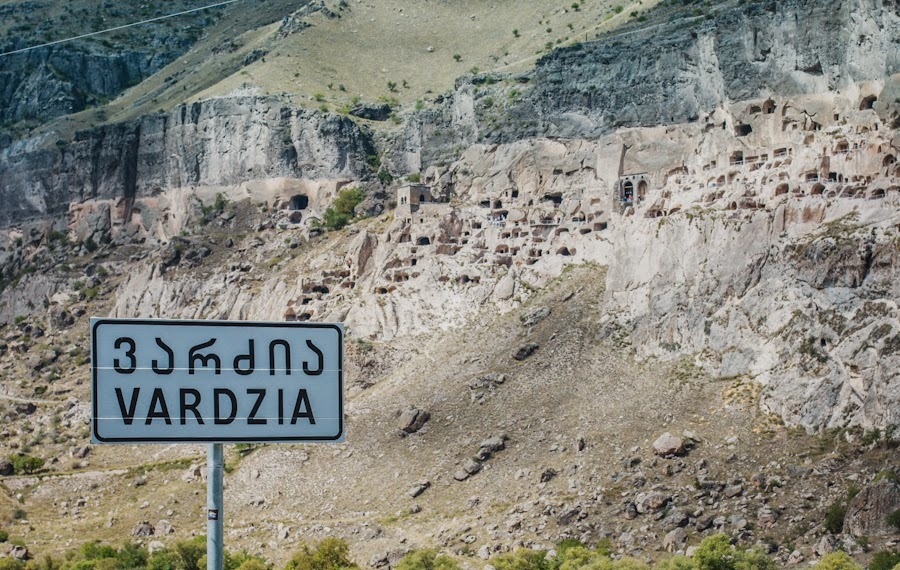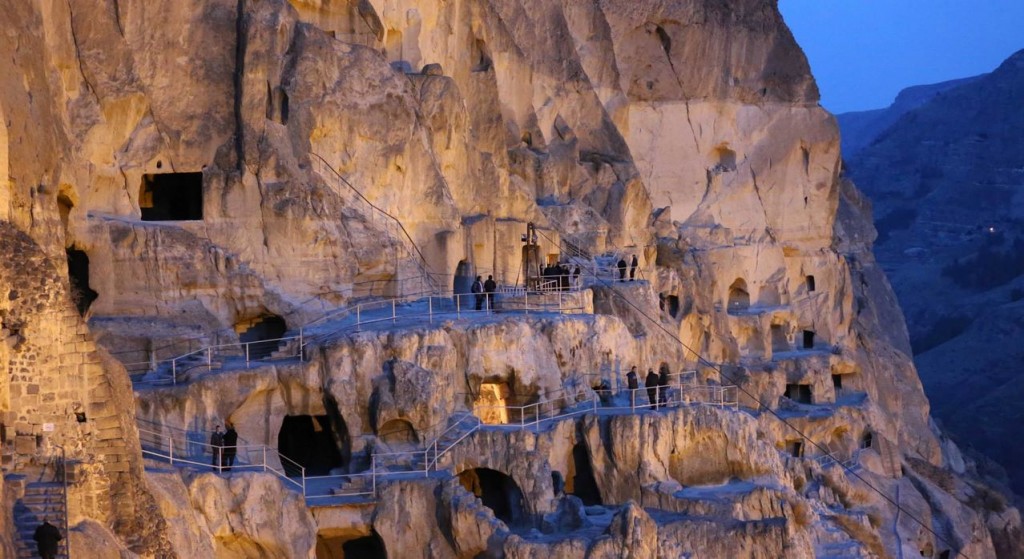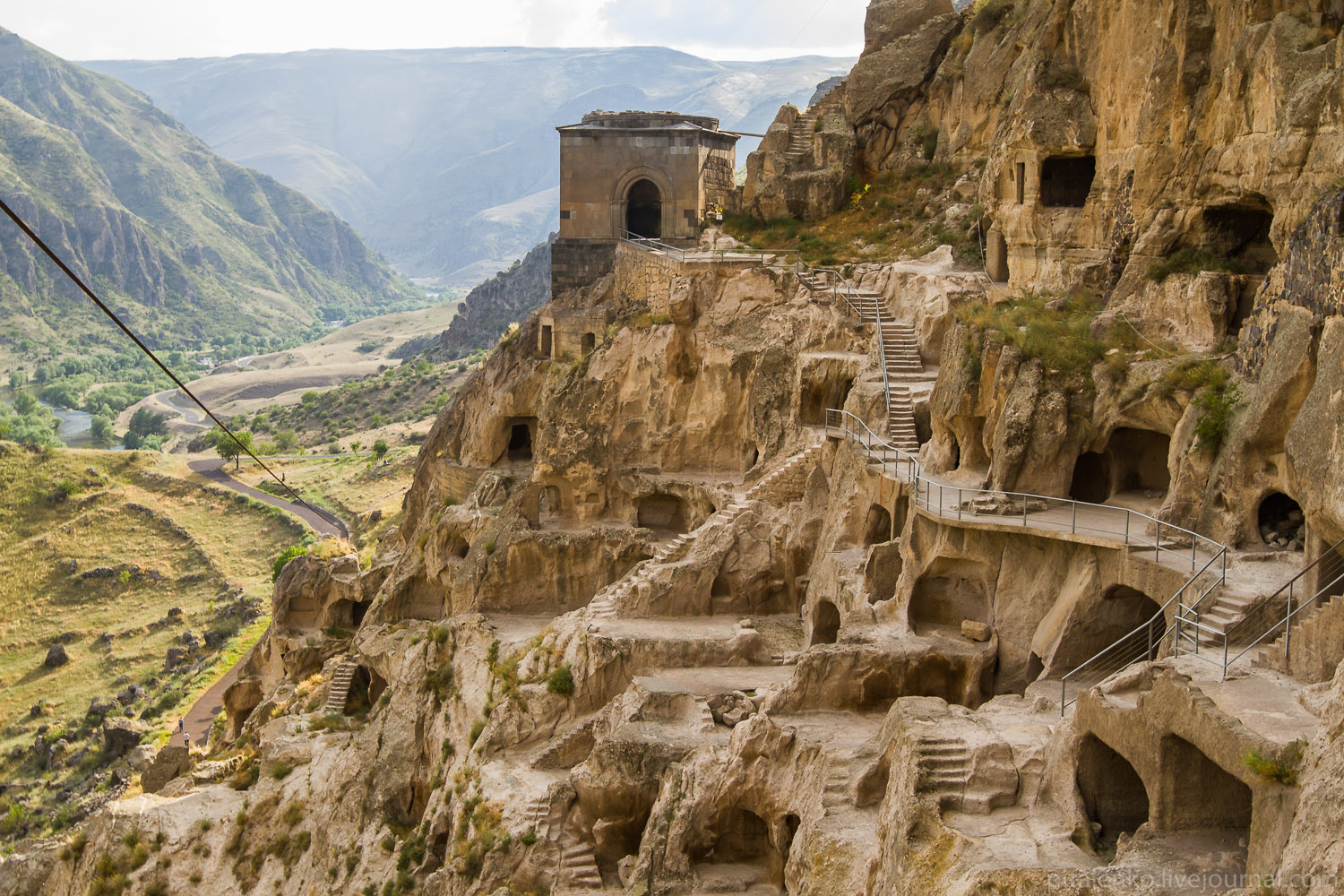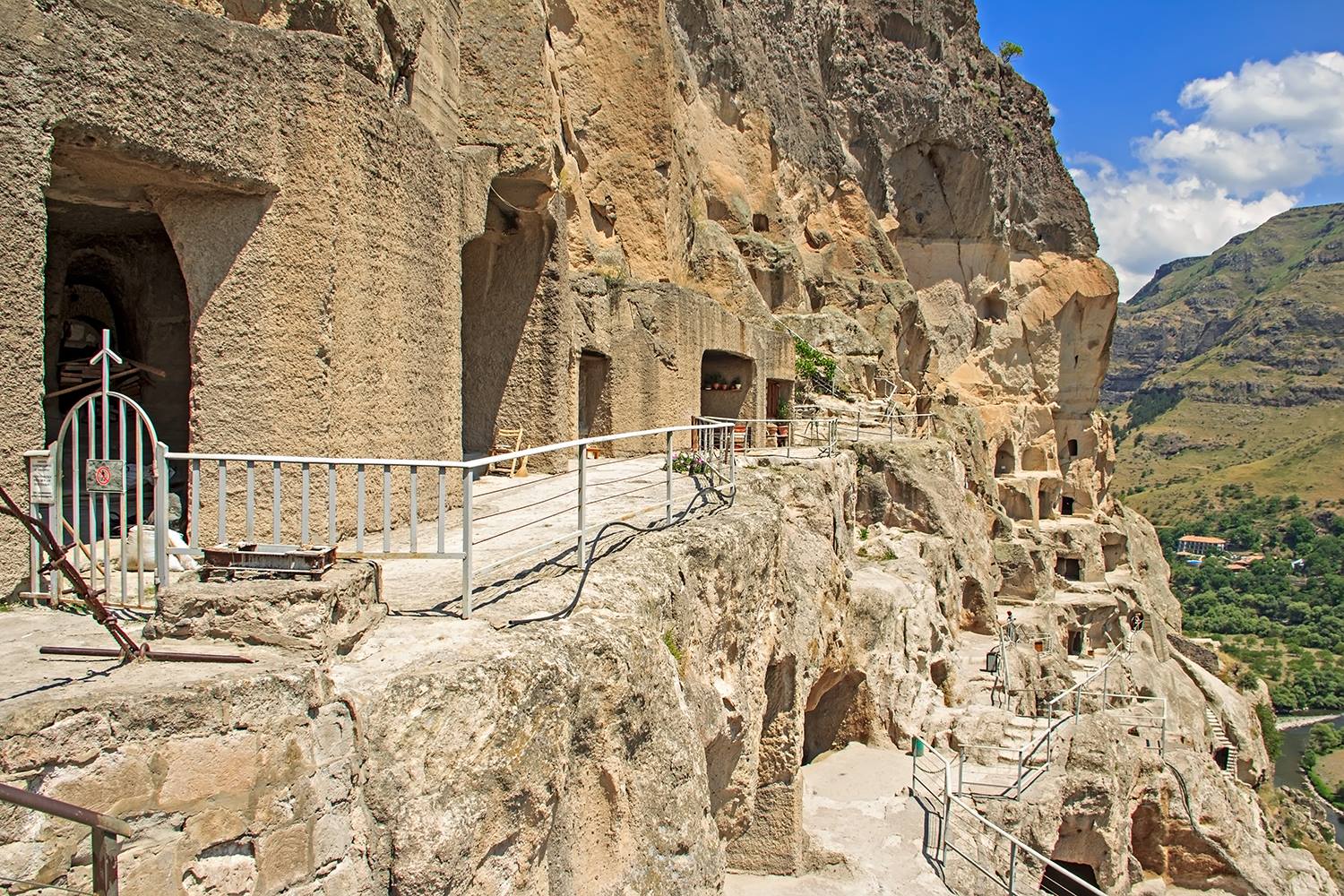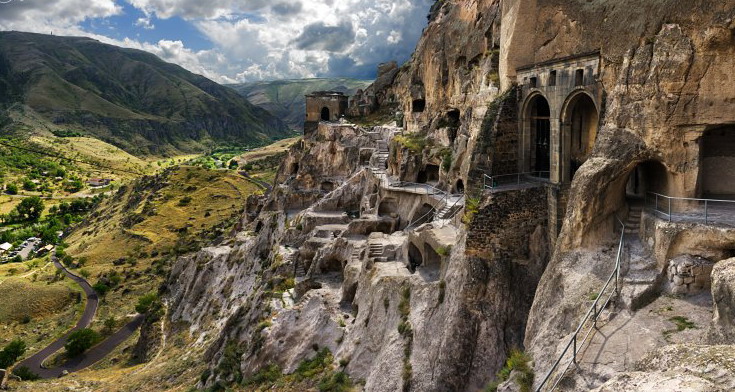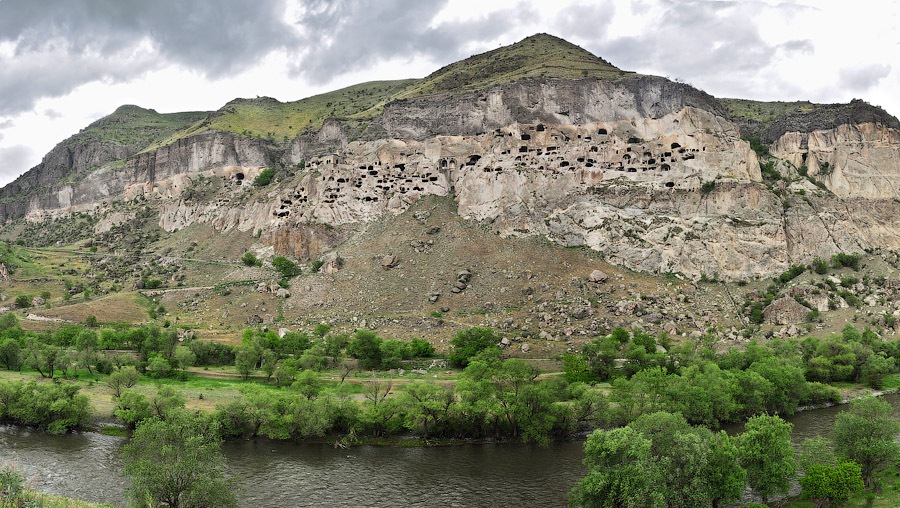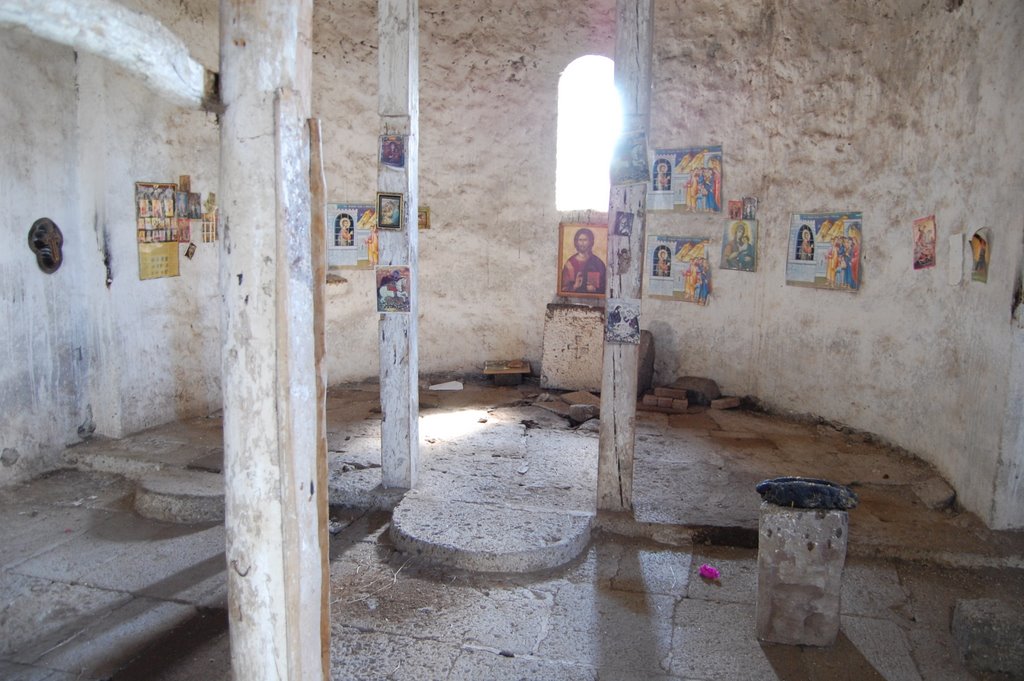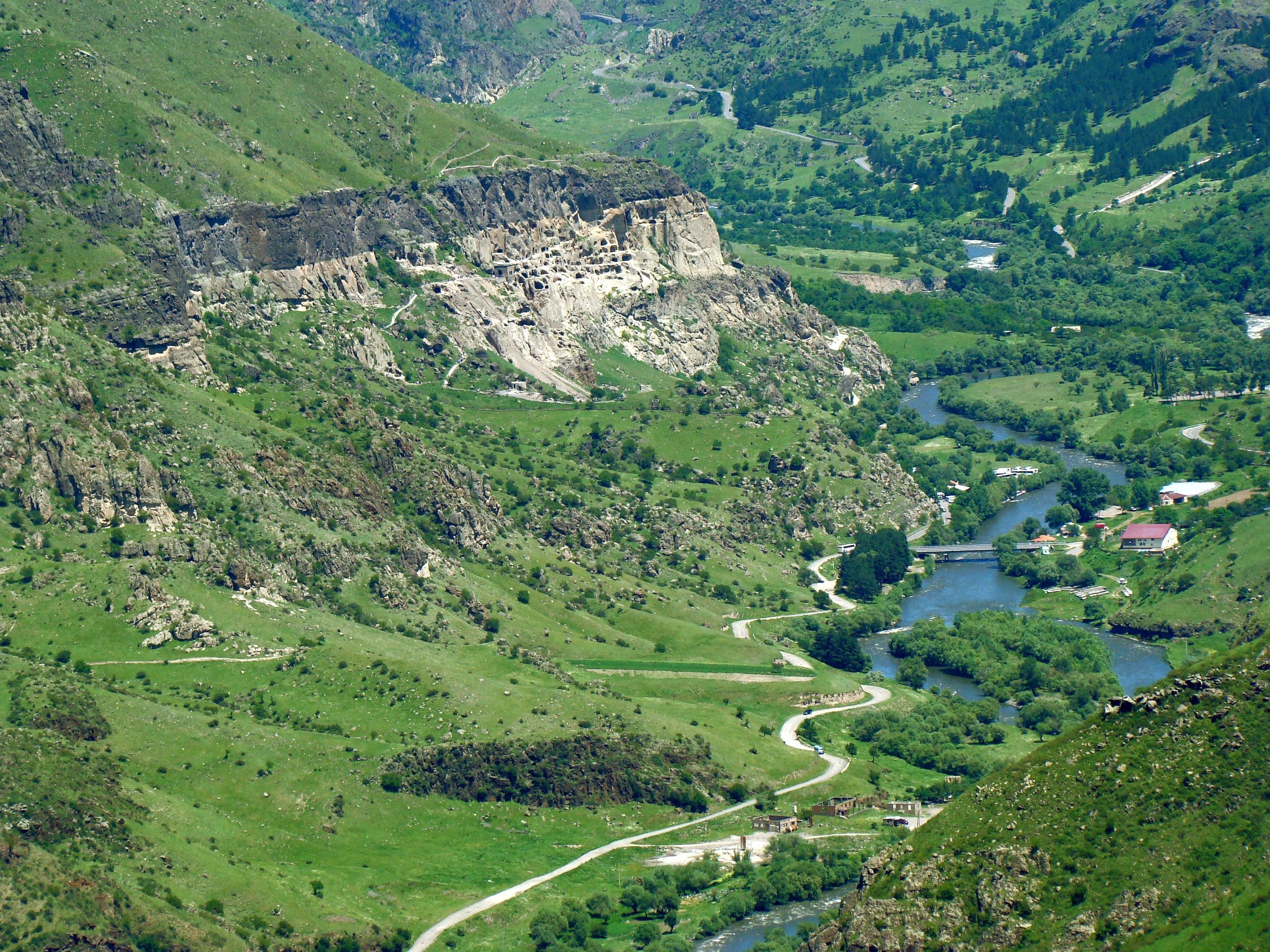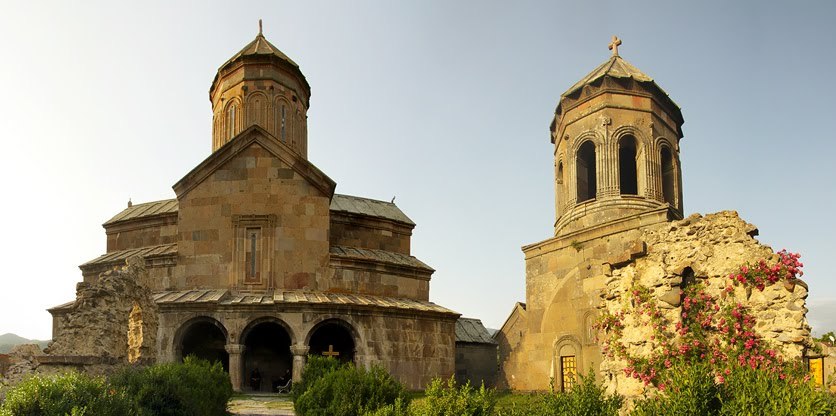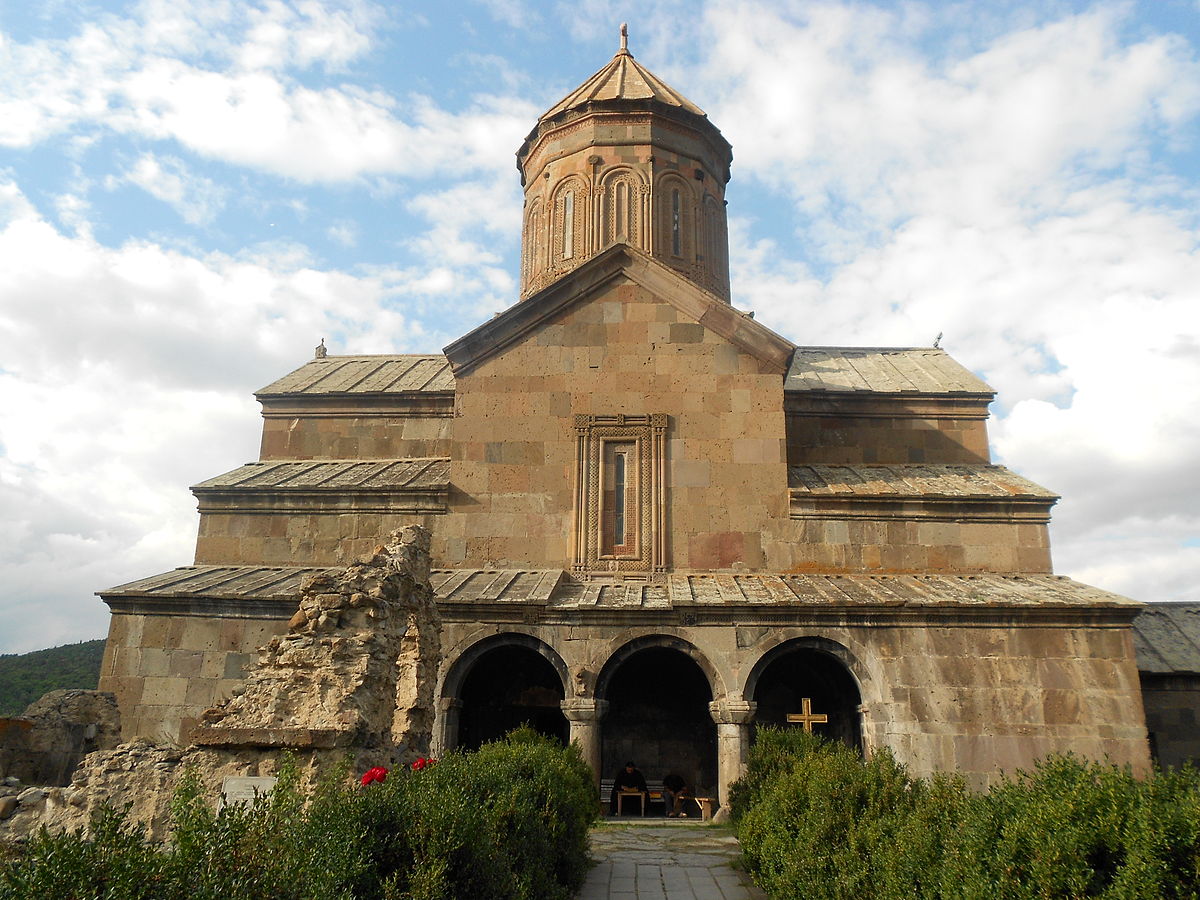ABASTUMANI
DETAILS
Abastumani is a small town (daba) and climatic spa in Adigeni Municipality, Samtskhe-Javakheti, Georgia. It is located on the southern slopes of the Meskheti Range (Lesser Caucasus), in the small river valley of Otskhe, 25 km northeast of Adigeni and 28 km west of Akhaltsikhe. As of the 2014 census, it had a population of 937. The Georgian National Astrophysical Observatory is located at Abastumani.
ATSKURI FORTRESS
DETAILS
Atskuri is a Georgian feudal fortress on the right bank of the Mtkvari River, approximately 30 kilometres from Borjomi, in the Samtskhe-Javakheti region.
Built in the 10th century, Atskuri Fortress was an important stronghold for the defense of Georgia during the Medieval ages.
Built in the 10th century, Atskuri Fortress was an important stronghold for the defense of Georgia during the Medieval ages.
BORJOMI PARK
DETAILS
Borjomi park is located in Borjomi, Samtskhe-Javakheti region. Borjomi’s mineral water park occupies a narrow, wooded valley. To get there, you need to cross the little Borjomula River just east of Borjomi Park train station. The original warm mineral spring, named Ekaterina Spring, sits beneath a pavilion straight ahead of the park entrance.
If you walk about 3km upstream, beyond the ‘attractions’ of the park proper, you’ll find a small, spring-fed swimming pool with a constant temperature of about 27°C.
If you walk about 3km upstream, beyond the ‘attractions’ of the park proper, you’ll find a small, spring-fed swimming pool with a constant temperature of about 27°C.
BORJOMI-KHARAGAULI NATIONAL PARK
DETAILS
Park is a protected area and one of the largest national parks on Caucasus. The park was established in 1995 and its total area is 85 047hectares, which is represented by well-preserved and protected forest habitats, rare and unique flora and fauna, and a unique and unforgettable landscape. The national park offers hiking, horseback riding, biking, cultural and educational tours – the routes function throughout the year. Picnic spots and camping sites are also situated along the routes
CHULE MONASTERY
DETAILS
The Chulevi monastery of St. George (Chule Monastery) is a 14th-century Georgian Orthodox monastic church located in Georgia’s southwest region of Samtskhe-Javakheti.
The Chulevi monastery sits on the left bank of the Kvabliani river, near the town of Adigeni in the historic province of Samtskhe. The monastery is alternatively known as Chule or Chulebi. The site was home to a monastic community already in the 11th century, but it was in the latter part of the 14th century that the current edifice was constructed to become a major religious and cultural center in south Georgia. An inscription in the medieval Georgian asomtavruli script reveals the name of the artist Arsen who frescoed the interior of Chulevi in 1381. The murals depict, inter alia, a group portrait of the local princely house of Jakeli, patrons of the monastery.
The Chulevi monastery shares a series of common features with the contemporary and nearby located churches of Zarzma and Sapara such as the typically elongated overall plan and the interior space, rectangular shape with no projections, a dome resting upon the walls of the altar and two cross-shaped pillars.
After the Ottoman conquest of the area, the Chulevi monastery declined and had been completely abandoned by 1595. The locals, still Christian at that time, saved the bells and some other church items by burying them in the adjacent wood. The bells were accidentally discovered in the 1980s and donated to the Akhaltsikhe local museum but were eventually turned over to the monastery once it was restored to the Georgian Orthodox Patriarchate in October 1999.
A team of Russian architects attempted, unsuccessfully, to repair the church in 1935/36 and several architectural details were lost in the process. Another attempt at rehabilitation was made in the 1970s and 1980s but was then interrupted. It was not until 2003 that systematic reconstruction fieldworks were launched and the monastery has largely been repaired since then.
The Chulevi monastery sits on the left bank of the Kvabliani river, near the town of Adigeni in the historic province of Samtskhe. The monastery is alternatively known as Chule or Chulebi. The site was home to a monastic community already in the 11th century, but it was in the latter part of the 14th century that the current edifice was constructed to become a major religious and cultural center in south Georgia. An inscription in the medieval Georgian asomtavruli script reveals the name of the artist Arsen who frescoed the interior of Chulevi in 1381. The murals depict, inter alia, a group portrait of the local princely house of Jakeli, patrons of the monastery.
The Chulevi monastery shares a series of common features with the contemporary and nearby located churches of Zarzma and Sapara such as the typically elongated overall plan and the interior space, rectangular shape with no projections, a dome resting upon the walls of the altar and two cross-shaped pillars.
After the Ottoman conquest of the area, the Chulevi monastery declined and had been completely abandoned by 1595. The locals, still Christian at that time, saved the bells and some other church items by burying them in the adjacent wood. The bells were accidentally discovered in the 1980s and donated to the Akhaltsikhe local museum but were eventually turned over to the monastery once it was restored to the Georgian Orthodox Patriarchate in October 1999.
A team of Russian architects attempted, unsuccessfully, to repair the church in 1935/36 and several architectural details were lost in the process. Another attempt at rehabilitation was made in the 1970s and 1980s but was then interrupted. It was not until 2003 that systematic reconstruction fieldworks were launched and the monastery has largely been repaired since then.
GREEN MONASTERY
DETAILS
Monastery located in a picturesque place in the Borjomi valley. People called it lovingly “The Green Monastery”, because all the trees in the valley are of a special green color. The stones, with which the church is built, are also green, but some are dark and some are light.. In the 16th century, during the invasions of Shah Thamaz, this monastery was raided. During this time dozens of monks were killed or tortured. Over the centuries, the divine service was no longer performed at the church. In the early 80s of the past century the church was rehabilitated. In 2002, after many centuries, the monastery was restored. There are many miracles and legends about the temple, which further enhances its interest.
KHERTVISI FORTRESS
DETAILS
Khertvisi fortress is one of the oldest fortresses in Georgia and was functional throughout the Georgian feudal period. It is situated in Southern Georgia, in Meskheti region. The fortress was first build in the 2nd century BC. The church was built in 985, and the present walls build in 1354. As the legend says, Khertvisi was destroyed by Alexander the Great.
LIKANI PALACE
DETAILS
The Romanovs’ Palace is also known as Likani Palace. Currently it serves as an official residence of the President of Georgia (since 2004). The palace was designed by Leon Benois for Grand Duke Nicholas Mikhailovich of Russia. The palace houses unique exhibits, including a table given to the Romanovs by Napoleon, armchairs given by the Shah of Iran, and many other interesting things.
PARAVANI LAKE
DETAILS
Paravani lake is a volcanic lake in Georgia, located in Javakheti Plateau between Abul-Samsari and Javakheti Ranges.
RABATI CASTLE
DETAILS
Rabati Castle is a medieval castle complex in Akhaltsikhe, Georgia. Originally established in the 9th century as the Lomisa Castle, it was completely rebuilt by Ottomans.
According to the Georgian Chronicles the city was established in the 9th century by Guaram Mampal, son of the King of Tao. From the 13th to the end of 14th centuries it was the capital city of Samtskhe-Saatabago, ruled by the Georgian princely (mtavari) family and a ruling dynasty of the Principality of Samtskhe, the House of Jakeli.
In 1393 the city was attacked by the armies of Tamerlane. Despite the Turko-Mongol invasions fortress withstood and continued to thrive. After the Treaty of Constantinople in 1590, the whole territory of Samtskhe-Saatabago went under the rule of Ottoman Empire. Turks Mostly used to build defensive edifices. In 1752 first mosque was built in Rabati.
By the end of the 18th century Metropolitan John writes that “despite the fact that a large part of the population has been Islamized, there’s still a functioning Orthodox church”. After the Treaty of Georgievsk between the Kingdom of Kartli and the Russian Empire was signed, the question of the fate of Akhaltsikhe arose. The first attempt to take the fortress in 1810 failed. Russians took the city after 18 years in 1828. After the Treaty of Adrianople in 1829, the Ottomans yielded part of Akhaltiske Region.
The fortress and its adjacent buildings were extensively rebuilt and renovated in 2011-2012 in order to attract more tourists to the area.
According to the Georgian Chronicles the city was established in the 9th century by Guaram Mampal, son of the King of Tao. From the 13th to the end of 14th centuries it was the capital city of Samtskhe-Saatabago, ruled by the Georgian princely (mtavari) family and a ruling dynasty of the Principality of Samtskhe, the House of Jakeli.
In 1393 the city was attacked by the armies of Tamerlane. Despite the Turko-Mongol invasions fortress withstood and continued to thrive. After the Treaty of Constantinople in 1590, the whole territory of Samtskhe-Saatabago went under the rule of Ottoman Empire. Turks Mostly used to build defensive edifices. In 1752 first mosque was built in Rabati.
By the end of the 18th century Metropolitan John writes that “despite the fact that a large part of the population has been Islamized, there’s still a functioning Orthodox church”. After the Treaty of Georgievsk between the Kingdom of Kartli and the Russian Empire was signed, the question of the fate of Akhaltsikhe arose. The first attempt to take the fortress in 1810 failed. Russians took the city after 18 years in 1828. After the Treaty of Adrianople in 1829, the Ottomans yielded part of Akhaltiske Region.
The fortress and its adjacent buildings were extensively rebuilt and renovated in 2011-2012 in order to attract more tourists to the area.
SAPARA MONASTERY
DETAILS
Sapara Monastery is a Georgian Orthodox monastery in the Akhaltsikhe District of Samtskhe-Javakheti region, Georgia.
It has existed from at least the 9th century, and has numbered among its monks many important figures in Georgian ecclesiastical history. At the end of the 13th century Sapara became a possession of the Jakeli family, whose leader, Sargis Jakeli, was adept at staying on good terms with the Mongols, which enabled Samtskhe to enjoy a peace unusual for the time. When he grew old, Sargis took monastic orders and changed his name to Saba. His son Beka built the largest of the 12 churches here, St Saba’s Church, named after the saint whose name his father had adopted, one of the most architecturally important churches of its time. The 14th-century frescoes inside are of high quality.
From the end of the 16th century until the beginning of the 17th century the Sapara Monastery became empty due to the expansion of Turkish policy into Samtskhe and during this process the monastery’s icons and other treasures were taken to more protected areas of Georgia.
It has existed from at least the 9th century, and has numbered among its monks many important figures in Georgian ecclesiastical history. At the end of the 13th century Sapara became a possession of the Jakeli family, whose leader, Sargis Jakeli, was adept at staying on good terms with the Mongols, which enabled Samtskhe to enjoy a peace unusual for the time. When he grew old, Sargis took monastic orders and changed his name to Saba. His son Beka built the largest of the 12 churches here, St Saba’s Church, named after the saint whose name his father had adopted, one of the most architecturally important churches of its time. The 14th-century frescoes inside are of high quality.
From the end of the 16th century until the beginning of the 17th century the Sapara Monastery became empty due to the expansion of Turkish policy into Samtskhe and during this process the monastery’s icons and other treasures were taken to more protected areas of Georgia.
TMOGVI FORTRESS
DETAILS
Tmogvi is a ruined fortress in the southern Georgian region of Samtskhe-Javakheti, on the left bank of the Mtkvari River, a few kilometers downstream of the cave city of Vardzia.
The name “Tmogvi” is derived from Georgian word mogvi, meaning “pagan priest” or “magus”. The fortress is first mentioned in sources from the 9th century. It was built as a defensive work controlling the ancient trade route between the Javakheti plateau and the gorge of Kura, over a gorge formed by the Kura River. It was a crucial military stronghold in the region of Javakheti. The feudal lords of the region were at that time the Bagratids, the Georgian branch.
Tmogvi gained importance after the neighboring town and fortress of Tsunda was ruined around 900 AD. By the beginning of the 11th century, the fortress had passed under the direct control of the unified Kingdom of Georgia.
In 1073, it was given in apanage to the nobleman Niania Kuabulisdze; his descendants kept it in the following centuries, before it passed to other major feudal families such as the Toreli, the Mkhargrzeli, the Shalikashvili or the Jakeli. In 1088, the castle collapsed in an earthquake. The medieval Georgian writer Sargis Tmogveli was from Tmogvi. The Ottoman Empire gained control of the fortress in 1578. In 1829, the Treaty of Adrianople transferred the fortress, among with the surrounding region, to the Russian Empire.
The name “Tmogvi” is derived from Georgian word mogvi, meaning “pagan priest” or “magus”. The fortress is first mentioned in sources from the 9th century. It was built as a defensive work controlling the ancient trade route between the Javakheti plateau and the gorge of Kura, over a gorge formed by the Kura River. It was a crucial military stronghold in the region of Javakheti. The feudal lords of the region were at that time the Bagratids, the Georgian branch.
Tmogvi gained importance after the neighboring town and fortress of Tsunda was ruined around 900 AD. By the beginning of the 11th century, the fortress had passed under the direct control of the unified Kingdom of Georgia.
In 1073, it was given in apanage to the nobleman Niania Kuabulisdze; his descendants kept it in the following centuries, before it passed to other major feudal families such as the Toreli, the Mkhargrzeli, the Shalikashvili or the Jakeli. In 1088, the castle collapsed in an earthquake. The medieval Georgian writer Sargis Tmogveli was from Tmogvi. The Ottoman Empire gained control of the fortress in 1578. In 1829, the Treaty of Adrianople transferred the fortress, among with the surrounding region, to the Russian Empire.
VANIS KVABEBI
DETAILS
Vanis Kvabebi is a cave monastery in Samtskhe-Javakheti region of Georgia near Aspindza town and the more famous cave city of Vardzia. The complex dates from 8th century and consists of a defensive wall built in 1204 and a maze of tunnels running on several levels in the side of the mountain.
There are also two churches in the complex. A newer stone church that is in quite good shape stands near the top of the wall, and a smaller, domed church that clings to the rock on the level of the highest tunnels
There are also two churches in the complex. A newer stone church that is in quite good shape stands near the top of the wall, and a smaller, domed church that clings to the rock on the level of the highest tunnels
VARDZIA CAVES
DETAILS
Vardzia is a cave monastery site in southern Georgia, excavated from the slopes of the Erusheti Mountain on the left bank of the Mtkvari River, thirty kilometres from Aspindza. The main period of construction was the second half of the twelfth century. The caves stretch along the cliff for some five hundred meters and in up to nineteen tiers. The Church of the Dormition, dating to the 1180s during the golden age of Tamar and Rustaveli, has an important series of wall paintings. The site was largely abandoned after the Ottoman takeover in the sixteenth century. Now part of a state heritage reserve, the extended area of Vardzia-Khertvisi has been submitted for future inscription on the UNESCO World Heritage List
ZARZMA MONASTERY
DETAILS
The Zarzma Monastery of Transfiguration (Georgian: ზარზმის მონასტერი, zarzmis p’erists’valebis monasteri) is a medieval Orthodox Christian monastery located at the village of Zarzma in Samtskhe-Javakheti region, southwest Georgia.
The Zarzma monastery is nested in the forested river valley of Kvabliani in the Adigeni municipality, 30 km west of the city of Akhaltsikhe. It is the complex of a series of buildings dominated by a domed church and a belfry, one of the largest in Georgia.
The earliest church on the site was probably built in the 8th century, by the monk Serapion whose life is related in the hagiographic novel by Basil of Zarzma. According to his source, the great nobleman Giorgi Chorchaneli made significant donation – including villages and estates – to the monastery. The extant edifice dates from the early years of the 14th century, however. Its construction was sponsored by Beka I, Prince of Samtskhe and Lord High Mandator of Georgia of the Jaqeli family. What has survived from the earlier monastery is the late 10th-century Georgian inscription inserted in the chapel’s entrance arch. The inscription reports the military aid rendered by Georgian nobles to the Byzantine emperor Basil II against the rebellious general Bardas Sclerus in 979. In 1544, the new patrons of the monastery – the Khursidze family – refurnished the monastery.
The façades of the church are richly decorated and the interior is frescoed. Apart from the religious cycles of the murals there are a series of portraits of the 14th-century Jaqeli family as well as of the historical figures of the 16th century. After the Ottoman conquest of the area later in the 16th century, the monastery was abandoned and lay in disrepair until the early 20th century, when it was reconstructed, but some of the unique characteristics of the design were lost in the process.
Currently, the monastery is functional and houses a community of Georgian monks. It is also the site of pilgrimage and tourism.
A smaller replica of the Zarzma church, known as Akhali Zarzma (“New Zarzma”) is located in the same municipality, near Abastumani. It was commissioned by Grand Duke George Alexandrovich, a member of the Russian imperial family, from the Tbilisi-based architect Otto Jacob Simons who built it between 1899 and 1902, marrying a medieval Georgian design with the contemporaneous architectural forms. Its interior was frescoed by the Russian painter Mikhail Nesterov.
The Zarzma monastery is nested in the forested river valley of Kvabliani in the Adigeni municipality, 30 km west of the city of Akhaltsikhe. It is the complex of a series of buildings dominated by a domed church and a belfry, one of the largest in Georgia.
The earliest church on the site was probably built in the 8th century, by the monk Serapion whose life is related in the hagiographic novel by Basil of Zarzma. According to his source, the great nobleman Giorgi Chorchaneli made significant donation – including villages and estates – to the monastery. The extant edifice dates from the early years of the 14th century, however. Its construction was sponsored by Beka I, Prince of Samtskhe and Lord High Mandator of Georgia of the Jaqeli family. What has survived from the earlier monastery is the late 10th-century Georgian inscription inserted in the chapel’s entrance arch. The inscription reports the military aid rendered by Georgian nobles to the Byzantine emperor Basil II against the rebellious general Bardas Sclerus in 979. In 1544, the new patrons of the monastery – the Khursidze family – refurnished the monastery.
The façades of the church are richly decorated and the interior is frescoed. Apart from the religious cycles of the murals there are a series of portraits of the 14th-century Jaqeli family as well as of the historical figures of the 16th century. After the Ottoman conquest of the area later in the 16th century, the monastery was abandoned and lay in disrepair until the early 20th century, when it was reconstructed, but some of the unique characteristics of the design were lost in the process.
Currently, the monastery is functional and houses a community of Georgian monks. It is also the site of pilgrimage and tourism.
A smaller replica of the Zarzma church, known as Akhali Zarzma (“New Zarzma”) is located in the same municipality, near Abastumani. It was commissioned by Grand Duke George Alexandrovich, a member of the Russian imperial family, from the Tbilisi-based architect Otto Jacob Simons who built it between 1899 and 1902, marrying a medieval Georgian design with the contemporaneous architectural forms. Its interior was frescoed by the Russian painter Mikhail Nesterov.

